31st Meeting of the Parties to the Montreal Protocol on Substances that Deplete the Ozone Layer (MOP 31)
4-8 November 2019 | Headquarters of the Food and Agriculture Organization of the UN (FAO), Rome, Italy
MOP 31 Summary Highlights
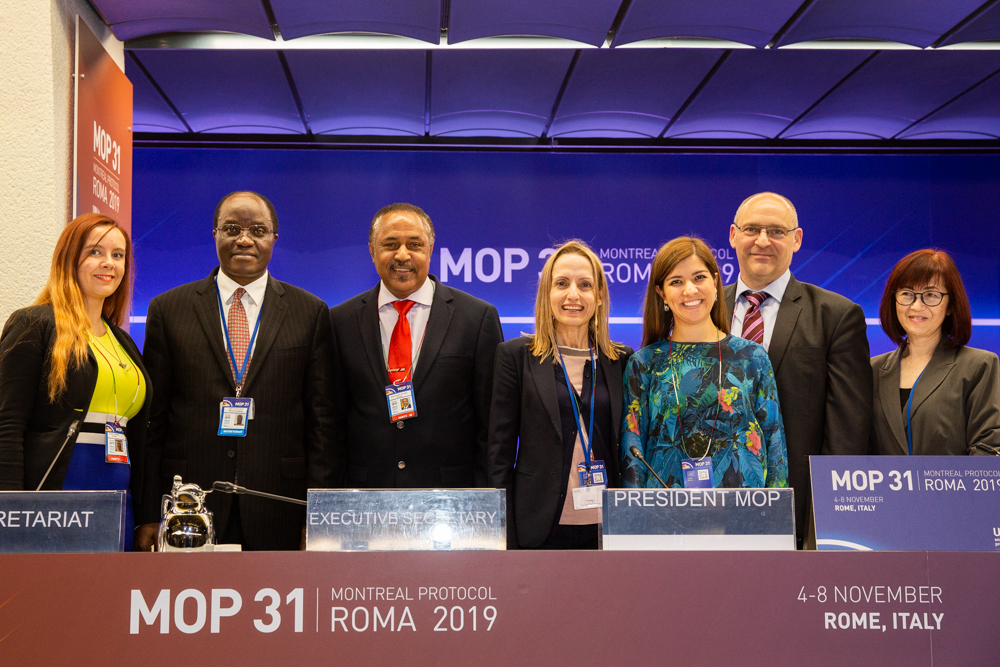
The thirty-first Meeting of the Parties to the Montreal Protocol successfully completed five days of negotiations, with the most pressing agenda items—terms of reference (ToR) for the study on the 2021-2023 replenishment of the Multilateral Fund (MLF), the unexpected emissions of trichlorofluoromethane (CFC-11), and the areas of focus for the 2022 quadrennial assessment reports of the Scientific Assessment Panel (SAP), the Technology and Economic Assessment Panel (TEAP) and the Environmental Effects Assessment Panel (EEAP)—requiring careful negotiation to balance different parties’ agendas.
In particular, parties had to find a middle ground that would, in the MLF Study ToR, allow for scenarios for implementation of the Kigali Amendment and funding for alternatives to hydrofluorocarbons (HFCs), while also including language that would, in some parties’ views, increase the transparency of potential fund disbursement.
Parties tried to balance investigating and resolving the unexpected emissions of CFC-11 by analyzing institutional processes to avoid similar situations in the future. These negotiations included how to alert parties about similar issues in the future by gathering more information on the current situation and whether impugning parties was a constructive way forward.
On the areas of focus for the 2022 quadrennial assessment, parties sought to include new and emerging challenges, such as energy efficiency in light of the HFC phase-down, while also maintaining a focus on ozone layer depletion without overburdening the Assessment Panels, which already have a myriad of tasks to complete.
MOP 31 also addressed: review of the TEAP’s ToR, composition, balance, fields of expertise, and workload; ongoing reported emissions of carbon tetrachloride; critical use exemptions; and issues of non-compliance. Parties were also invited to sign the Rome Declaration on the Contribution of the Montreal Protocol to Food Loss Reduction through Sustainable Cold Chain Management.
Highlights for Friday, 8 November 2019
The thirty-first meeting of the parties to the Montreal Protocol (MOP 31) convened for its final day on Friday, 8 November 2019, in Rome, Italy.
In the morning, the preparatory segment convened for stock-taking, with the MOP noting that a number of agenda items need additional time so parties can conclude their deliberations.
The High-Level Segment then reconvened, with the MOP hearing statements from heads of delegation. Key themes highlighted, included:
- The cold chain is vital for sustainable development,
- More financial and technical support for phasing down ozone depleting substances is necessary,
- Ensuring better enforcement of the Protocol, in light of CFC-11 emissions, and
- The Kigali Amendment as a “turning point” in the Protocol’s link to broader climate change efforts.
The Preparatory Segment reconvened in the early evening. It noted that the following contact groups still require additional time:
- 2022 quadrennial Assessment
- Unexpected emissions of CFC-11
- MLF replenishment study terms of reference
- Article 5 parties access to energy-efficient technologies in the refrigeration, air-conditioning and heat-pump sectors.
00:33 - MOP 31 is closed at 00:33 on Saturday, 9 November 2019.
IISD Reporting Services, through its Earth Negotiations Bulletin (ENB) meeting coverage, provided daily web coverage and daily reports from MOP 31. In addition, IISD Reporting Services has published a summary and analysis report in HTML and PDF.
Photos by IISD/ENB | Natalia Mroz
For photo reprint permissions, please follow instructions at our Attribution Regulations for Meeting Photo Usage Page
+ Visit the web coverage for Friday, 8 November 2019
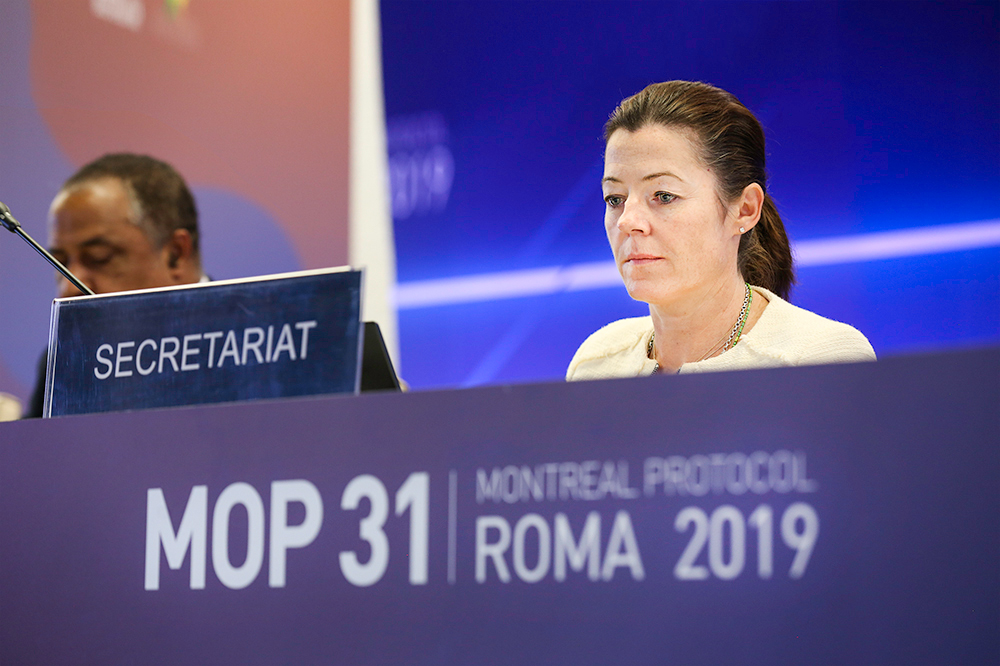
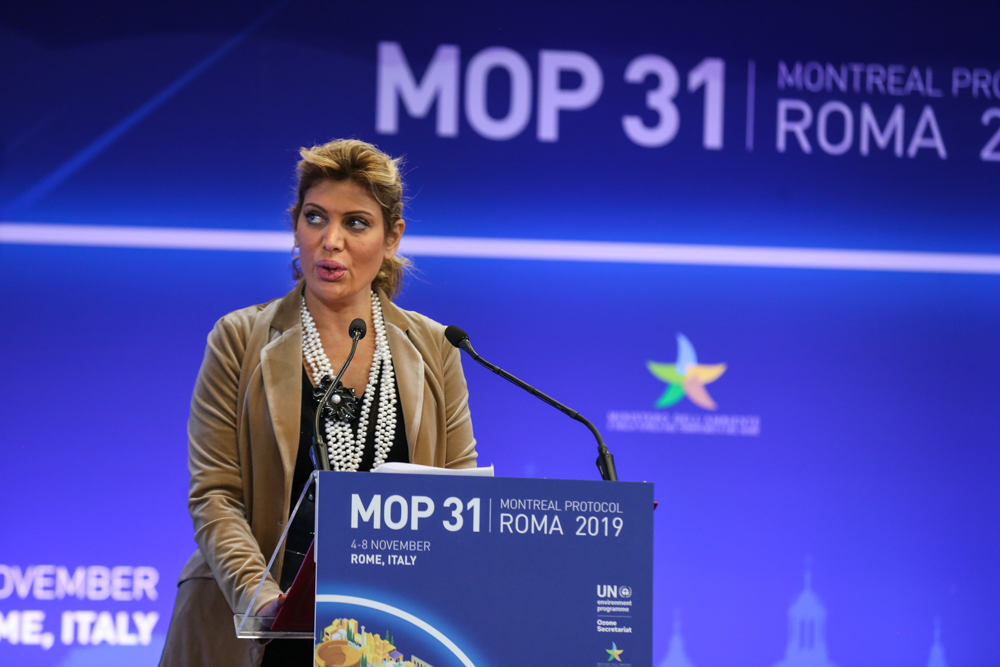
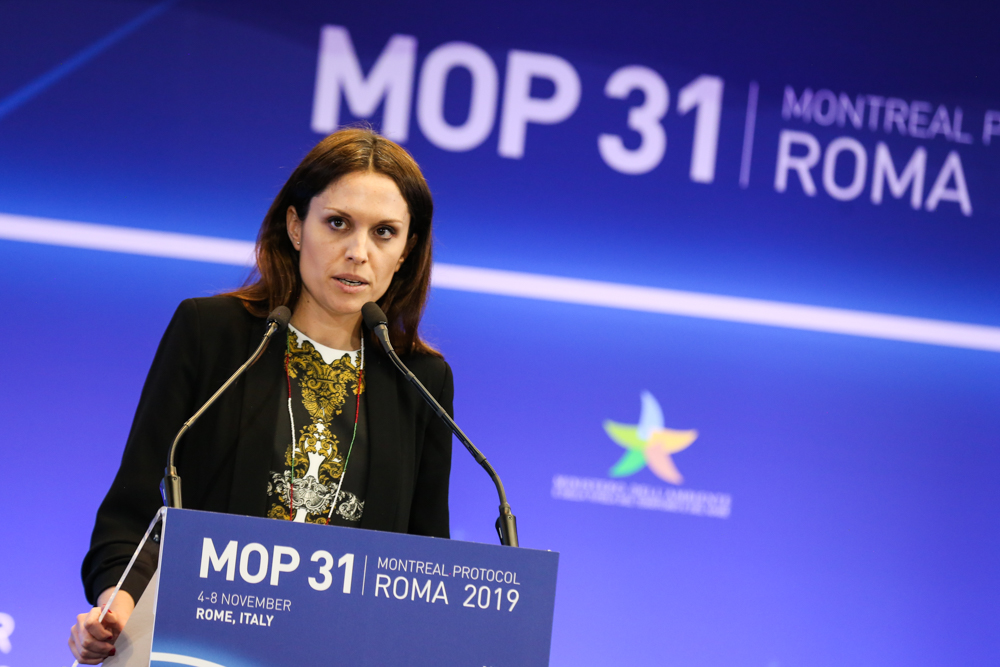

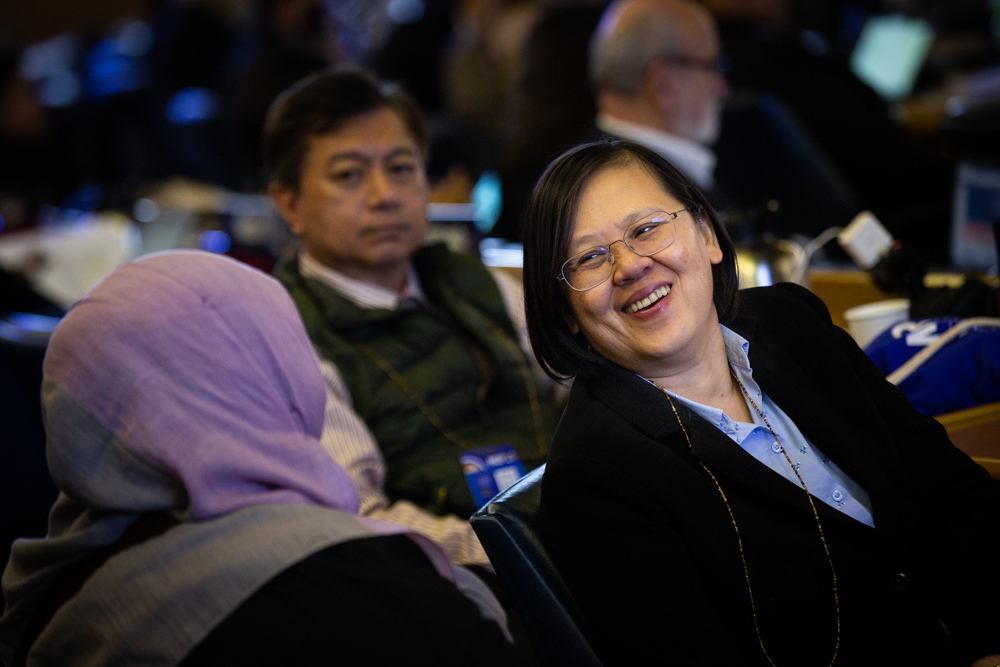
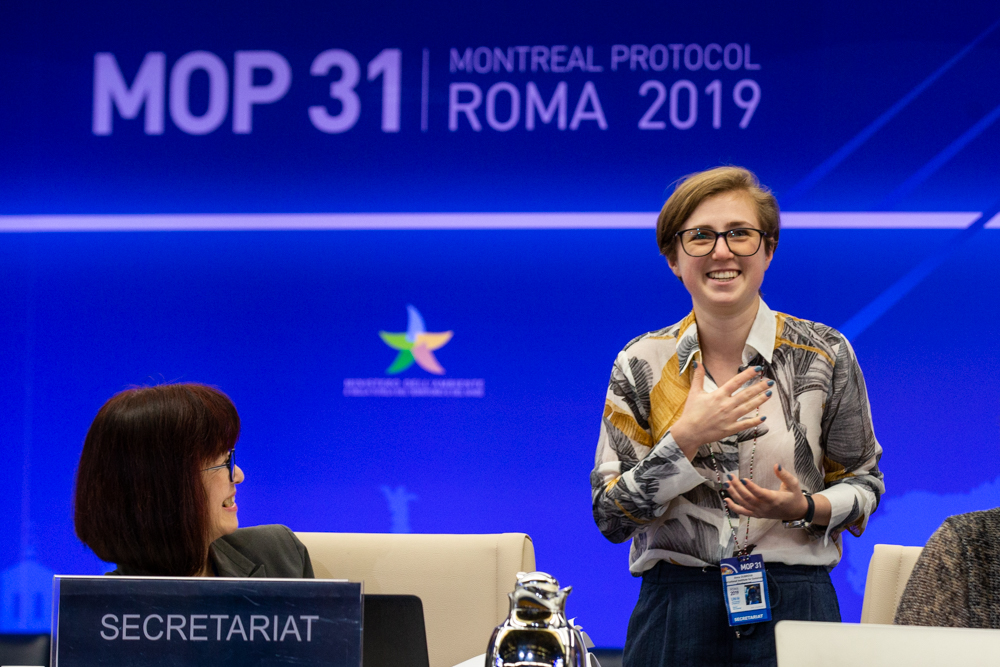
Contact Groups
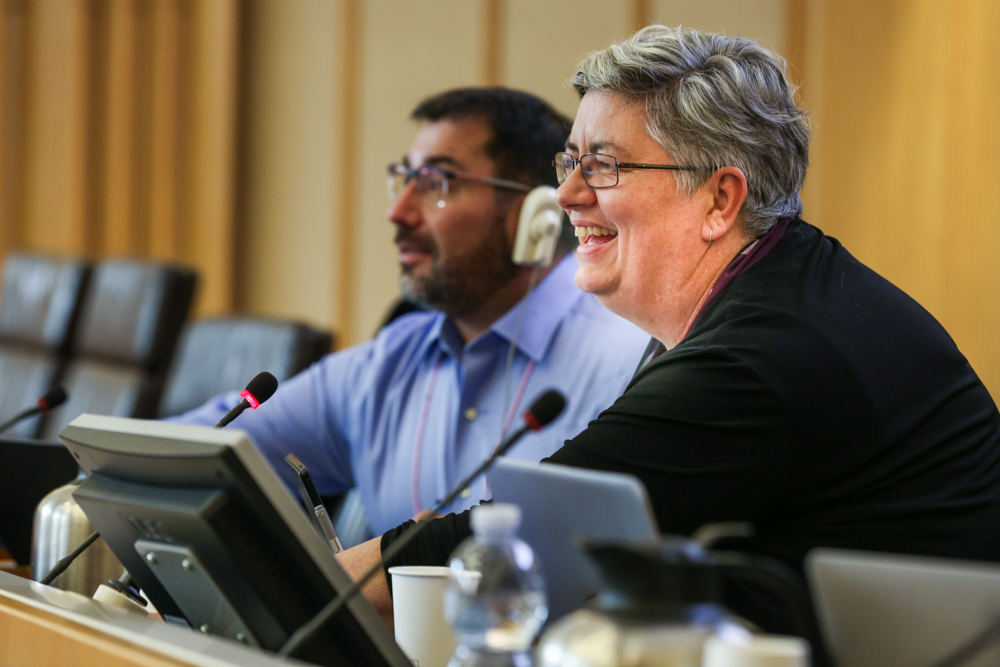
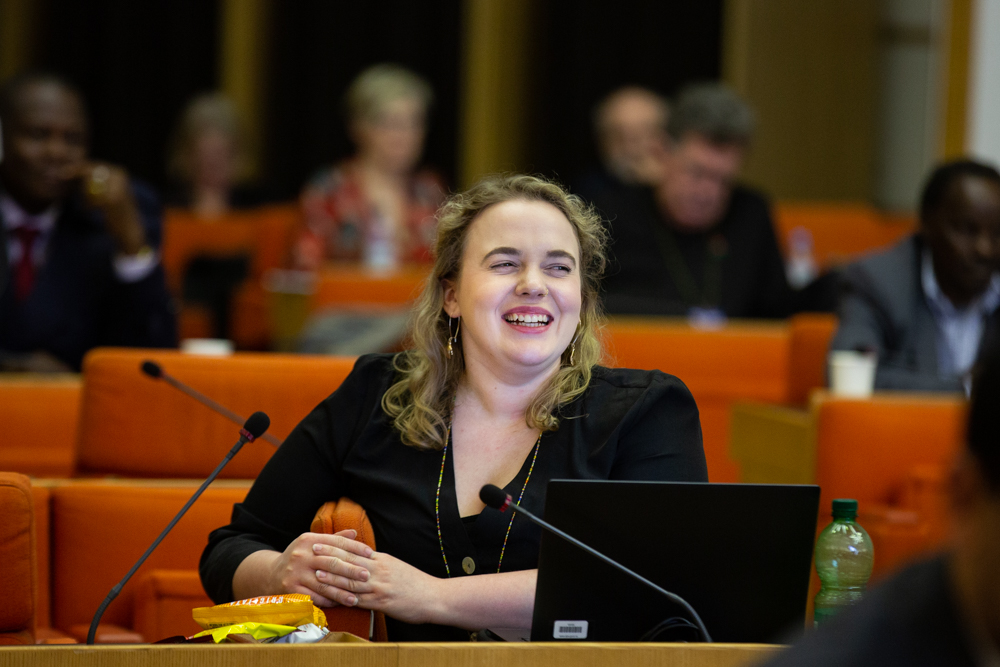
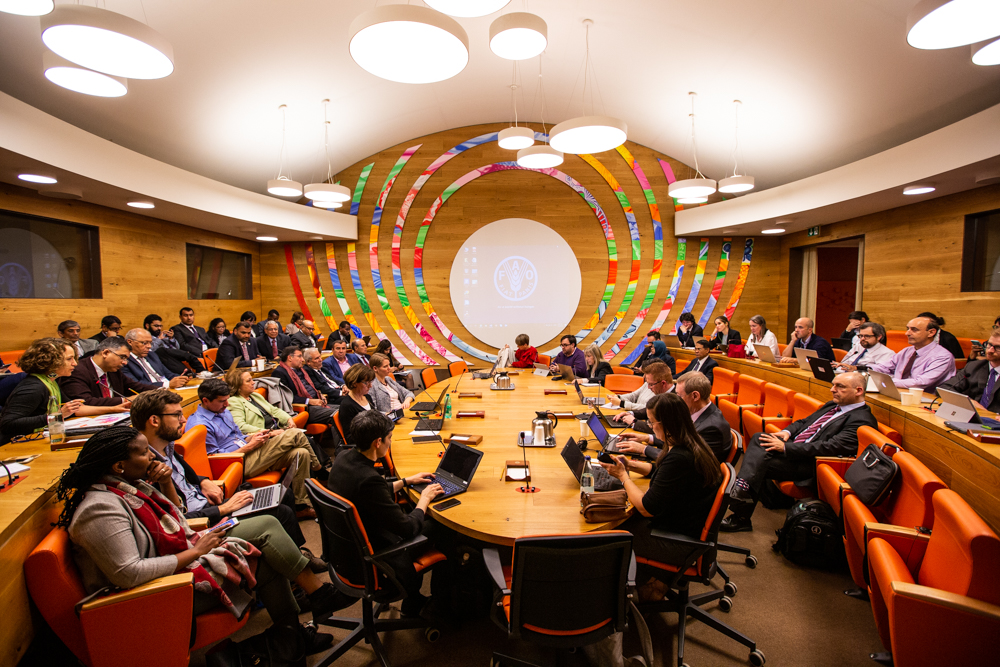
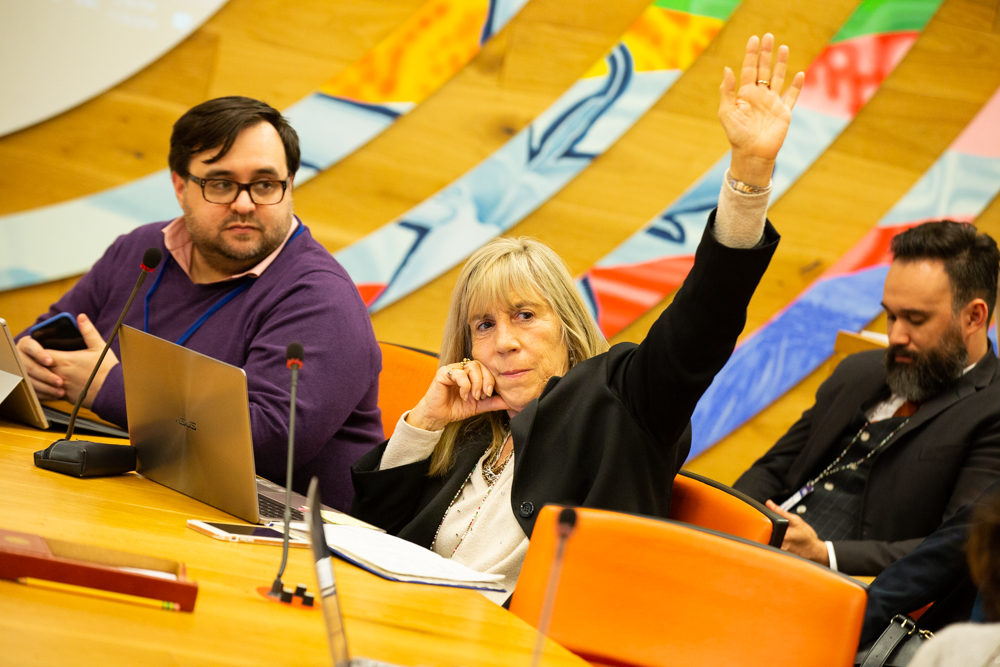
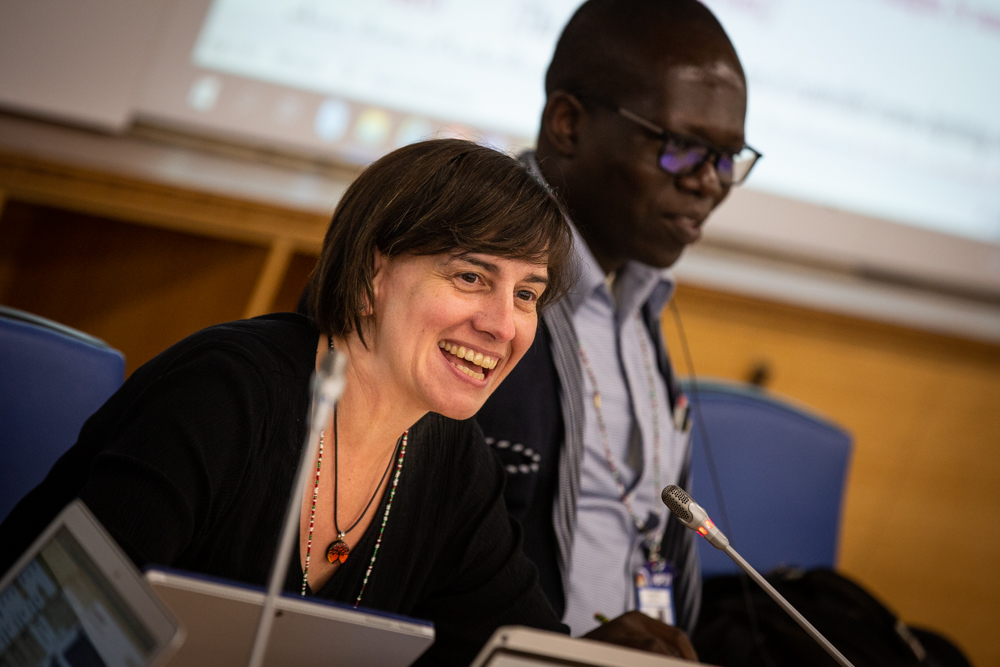
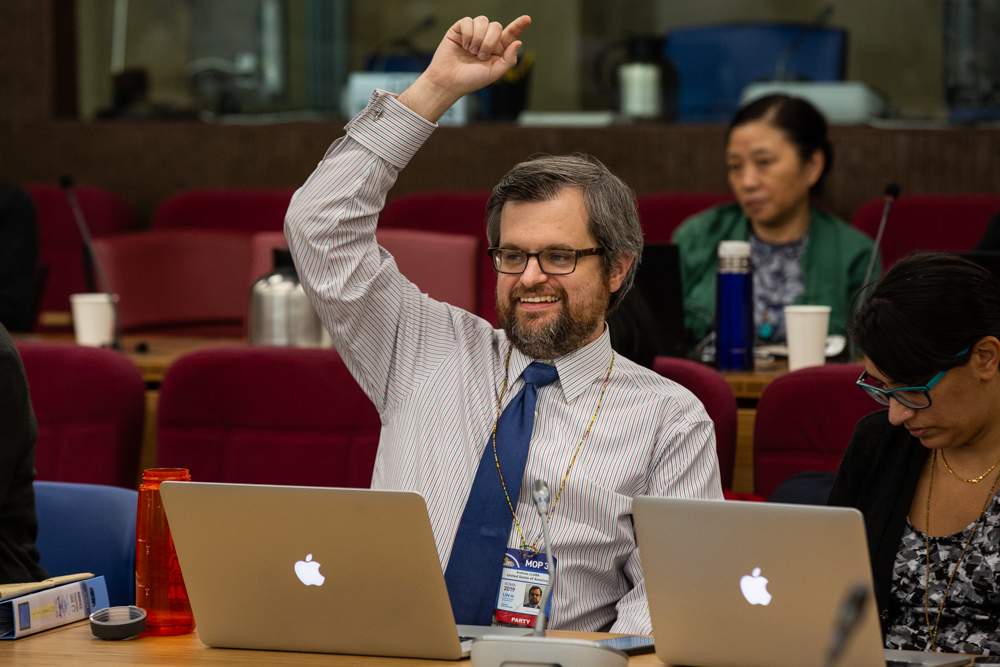
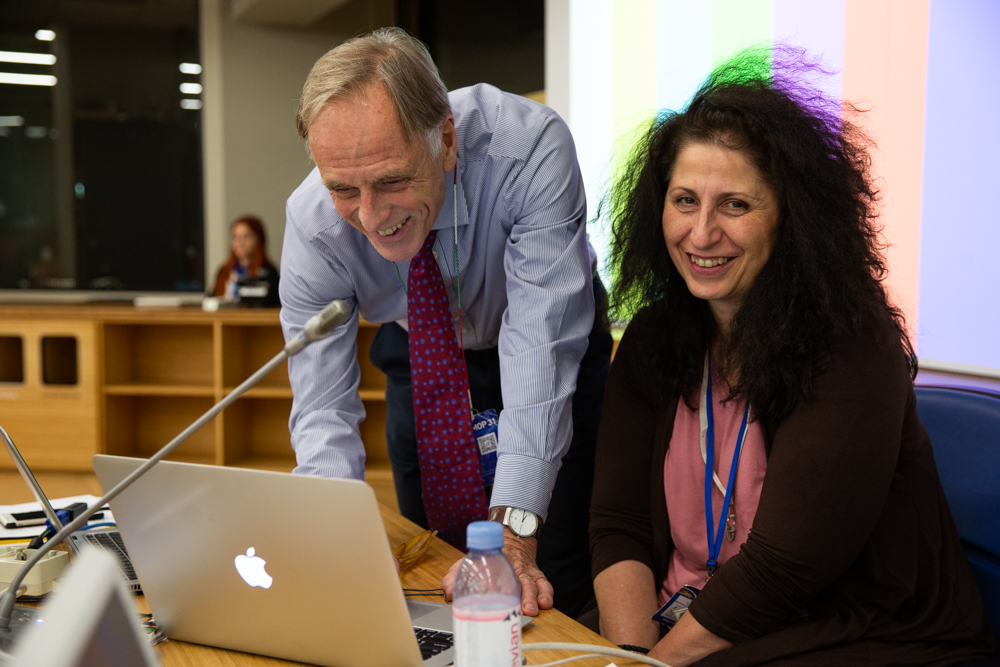
Highlights for Thursday, 7 November 2019

The penultimate day of the thirty-first meeting of the parties to the Montreal Protocol (MOP 31) convened on Thursday, 7 November 2019, in Rome, Italy.
The High-Level Segment opened with statements from dignitaries. Sergio Costa, Italian Minister for the Environment, Land and Sea, welcomed guests, and urged parties to work together “to shoulder our responsibilities to ensure the protection of the environment for the future.” Inger Andersen, UNEP Executive Director, underscored the interconnectedness of environmental challenges, stating “nothing short of universal ratification of the Kigali Amendment is acceptable.” Cardinal Pietro Parolin, Secretary of State, Holy See, on behalf of Pope Francis, cited aspects of a successful model of environmental protection and integral human development, highlighting the Montreal Protocol as an example.
Qu Dongyu, UN Food and Agriculture Organization (FAO) Director General, highlighted the impact that sustainable food chain can have on agriculture and food production. MOP 30 President Liana Ghahramanyan noted that it is difficult to overestimate the vital role of the ozone layer and its benefits to life on earth. The high-level roundtable, on the Montreal Protocol’s contribution to the cold food supply chain, described national and global action plans to expand and promote cold chain infrastructure.
The Assessment Panels presented their synthesis report for the 2018 Quadrennial Assessment. Key messages included, inter alia:
- 2019 marks the smallest ozone hole since 1983, but this is due to unusual meteorological conditions;
- the decline of methyl bromide in the atmosphere has halted;
- CTC emissions are higher than expected due to unaccounted emission sources and a longer than expected CTC lifetime; and
- understanding banks of ozone depleting substances (ODS) is key for understanding ozone recovery.
The Chair of the Multilateral Fund’s (MLF) Executive Committee (ExCom) described the Fund’s activities over the intervening year.
The MOP then heard statements from heads of delegations, with many noting national activities to phase-out ODS and prepare for the HFC phase-down.
The preparatory segment convened briefly in the afternoon to hear updates on outstanding agenda items. Contact groups and informal discussions took place throughout the day.
Over the course of the day, delegates were seen rushing in and out of meeting rooms as they tried to find common ground on outstanding agenda items. As they did so, many were reminded that the success of the Protocol is due to the fact that it doesn’t work in isolation. As Cardinal Parolin had reminded delegates in the morning, a successful environmental agreement “is grounded in the knowledge that everything is connected.”
+ Visit the web coverage for Thursday, 7 November 2019
+ Read the ENB report for Thursday, 7 November 2019 in HTML or PDF format.

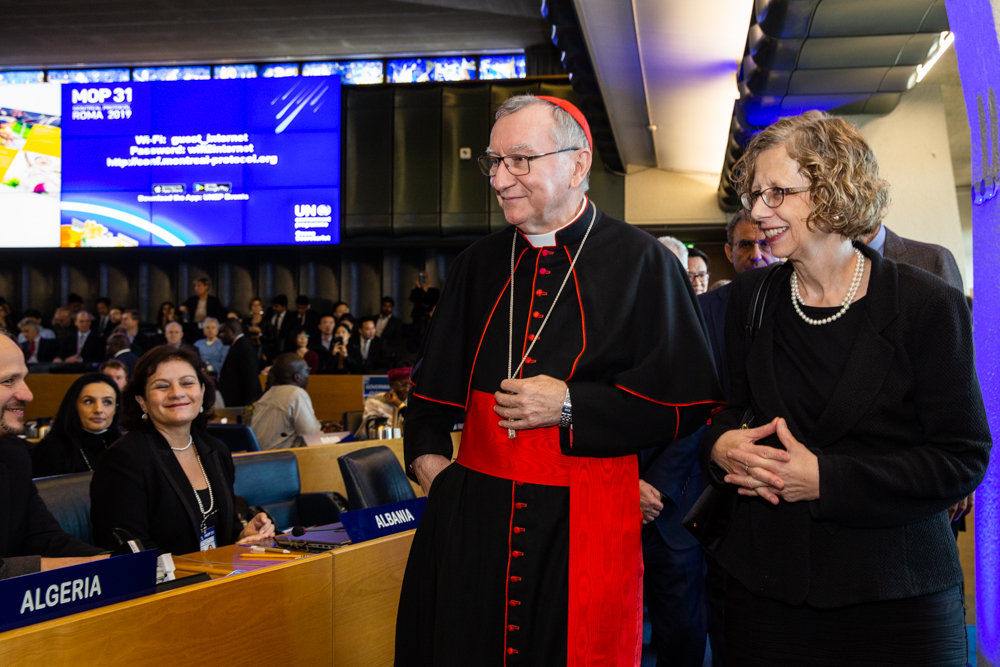
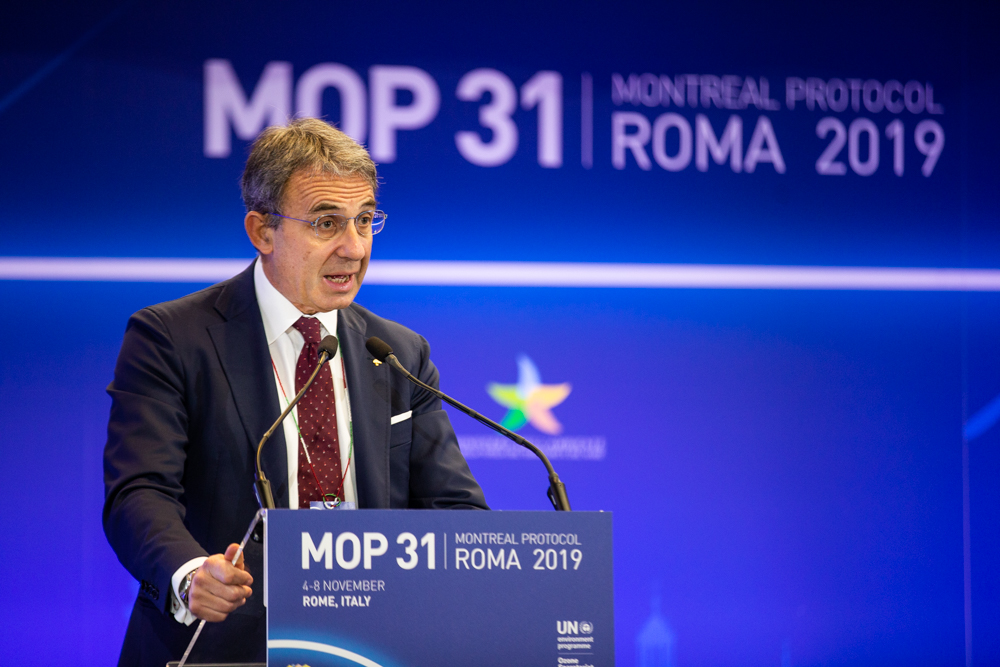
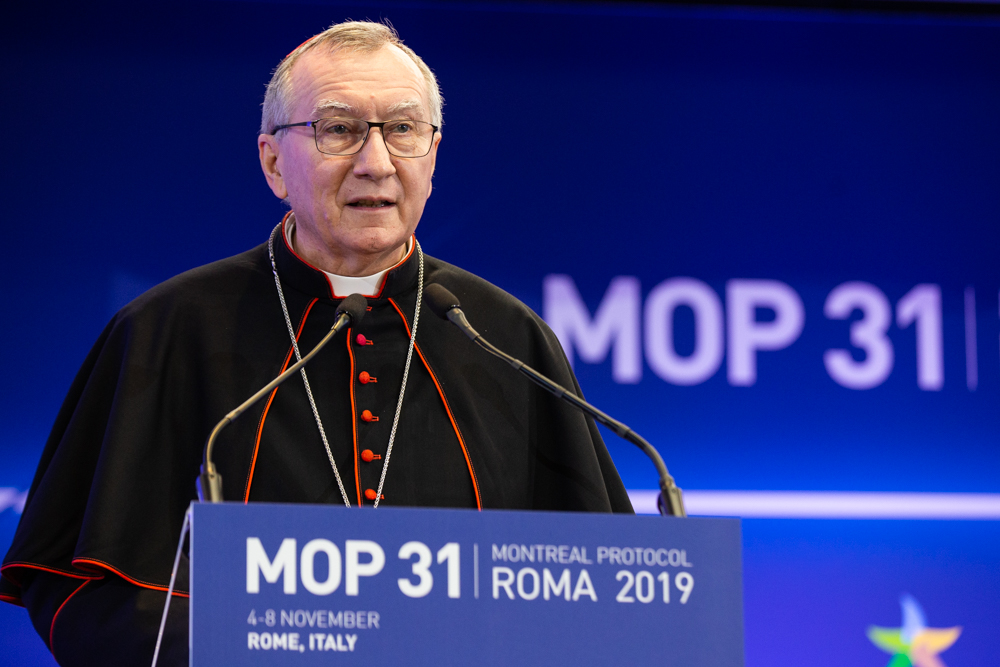
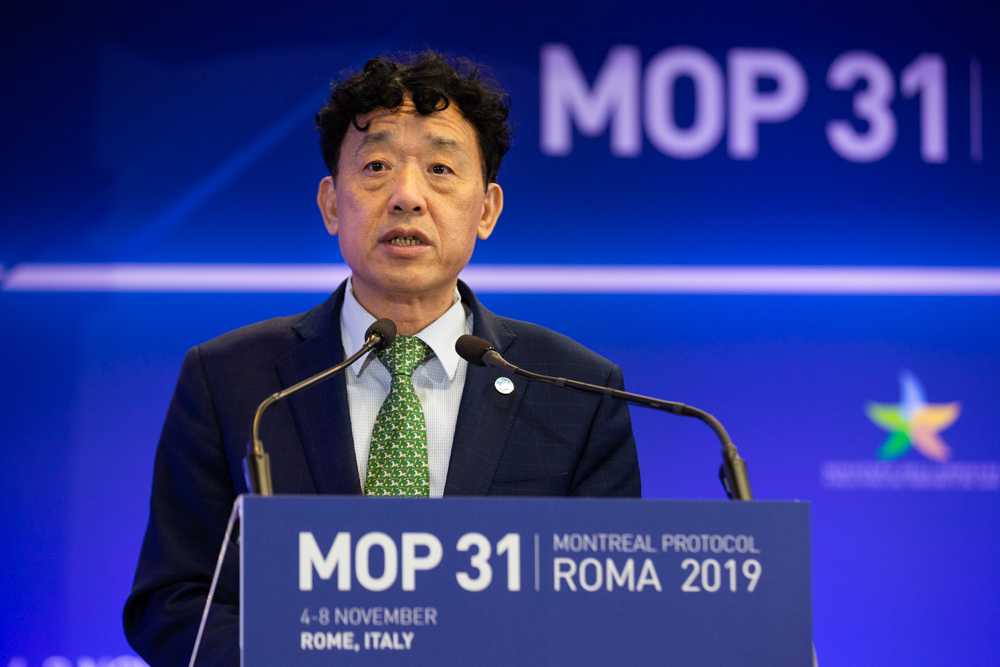
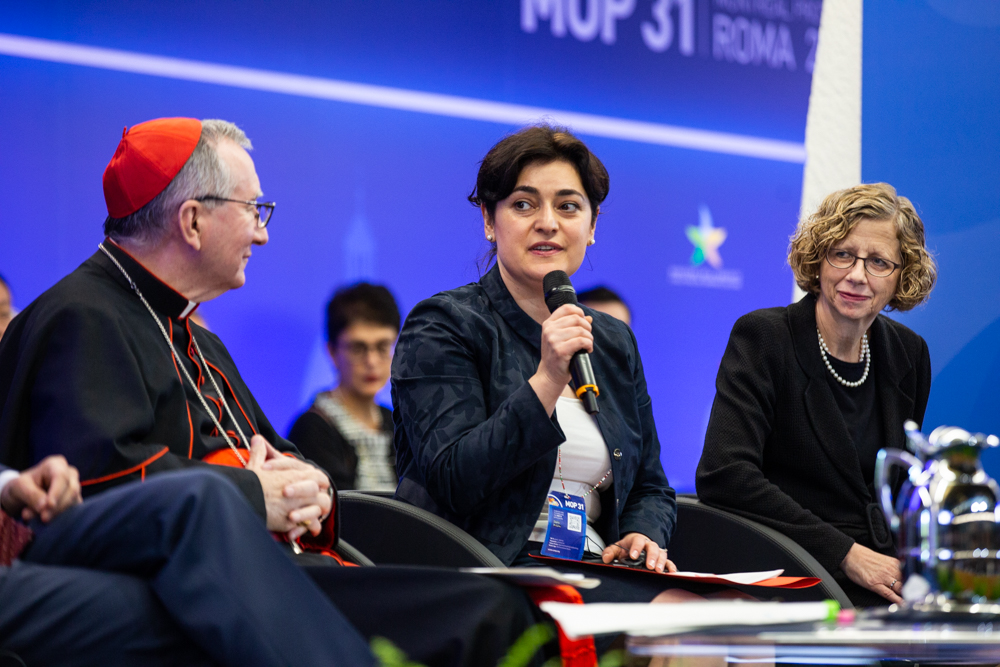
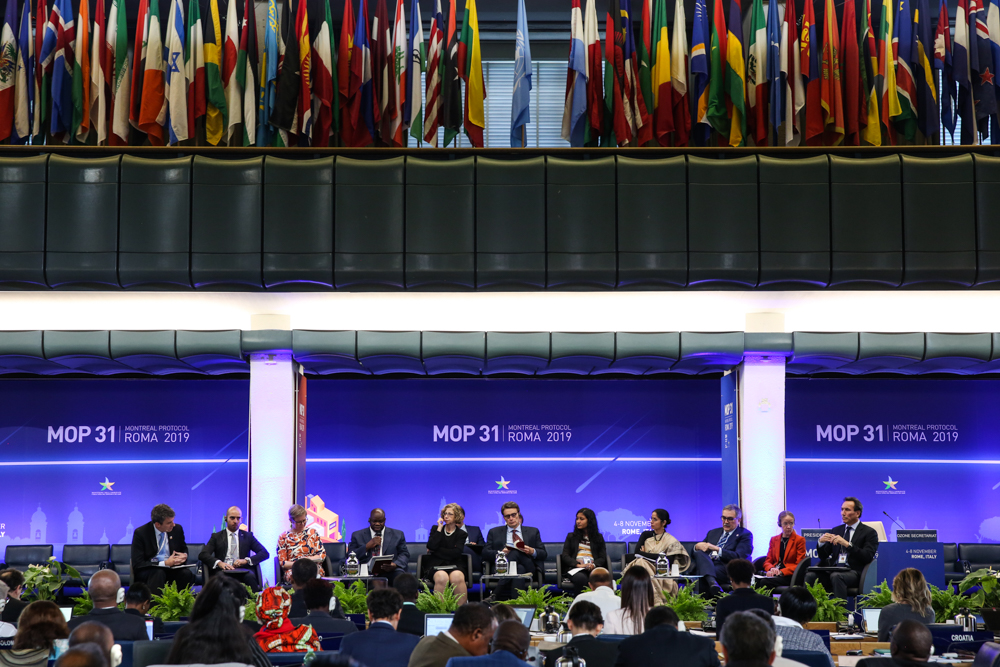
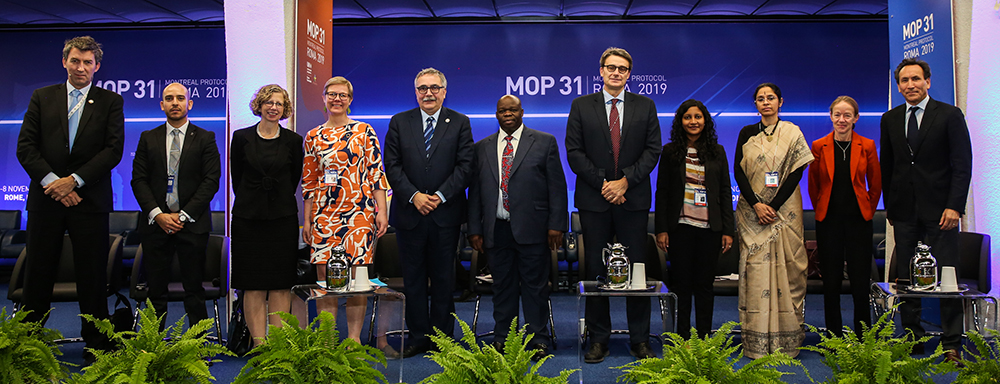
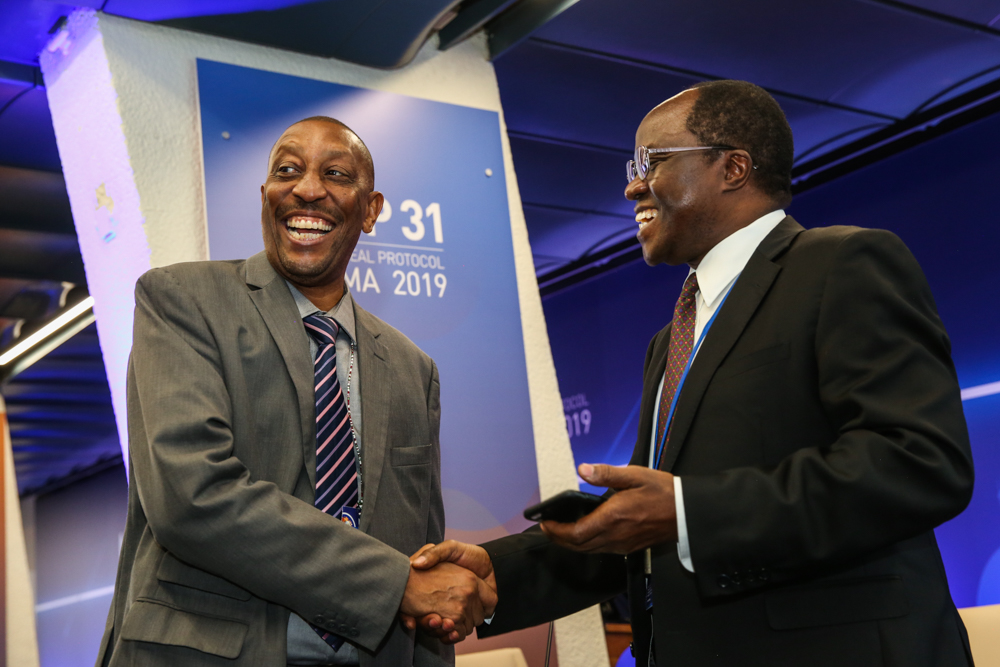
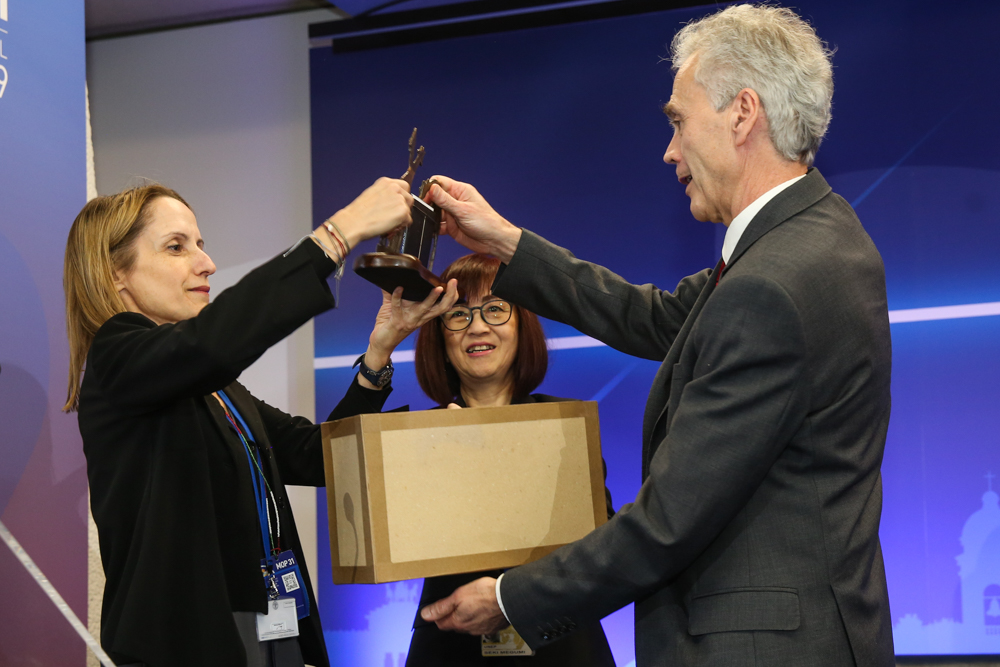
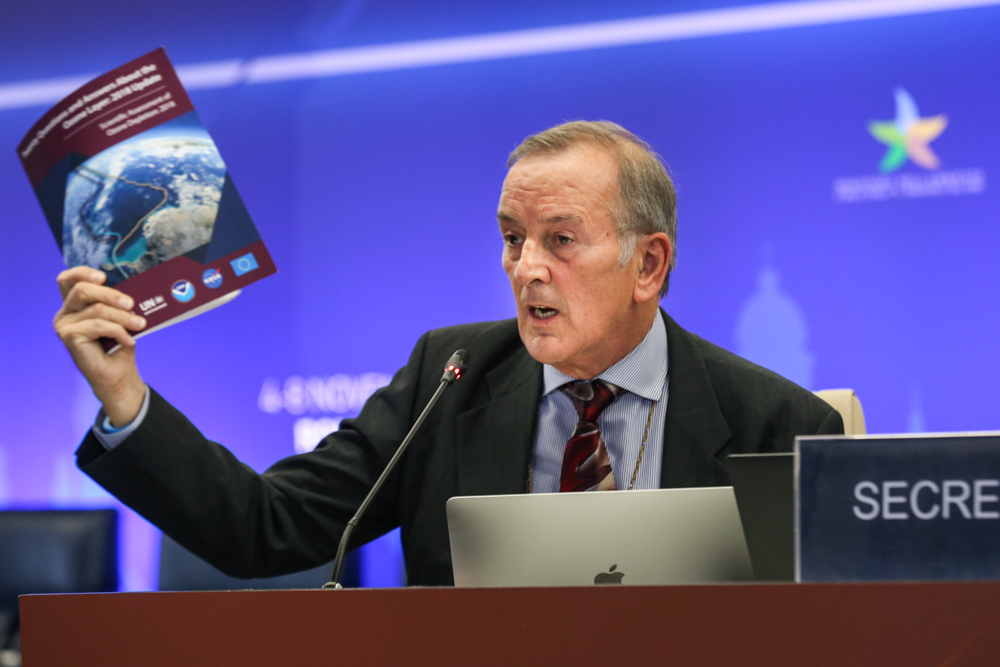

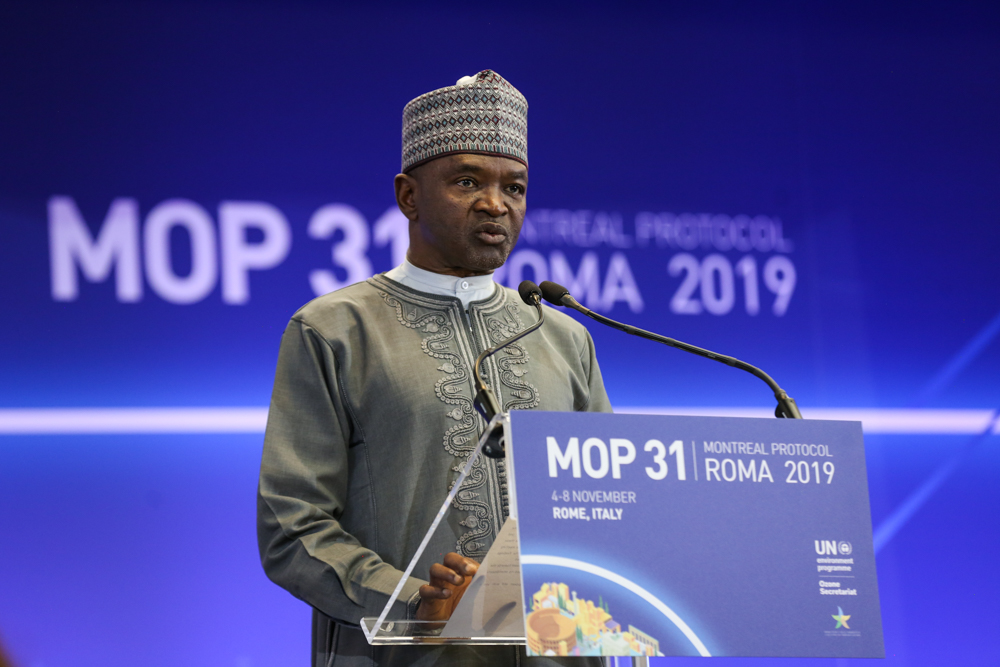
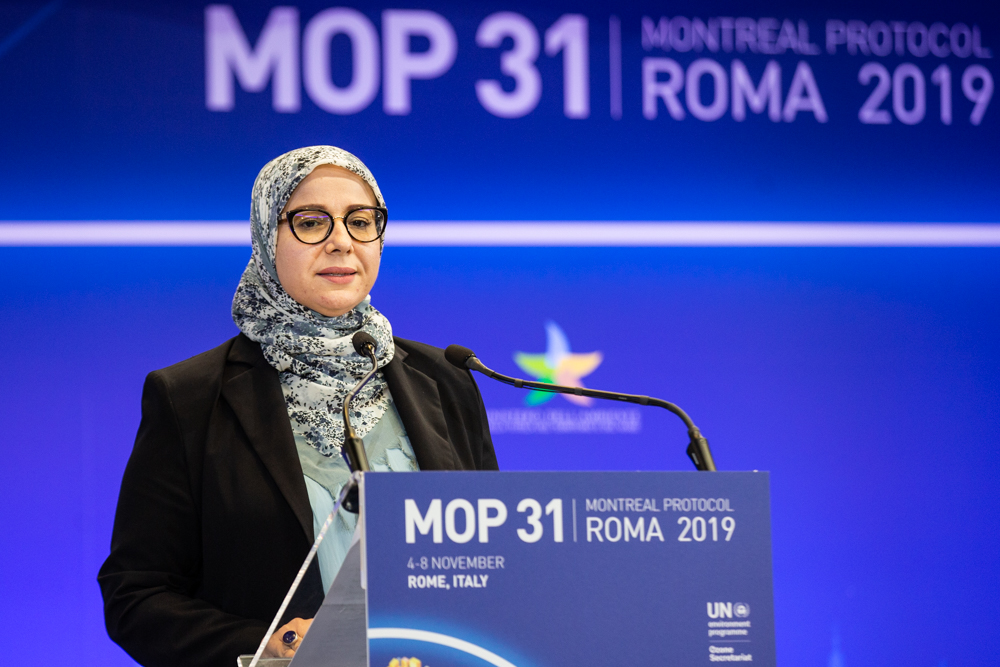
Highlights for Wednesday, 6 November 2019
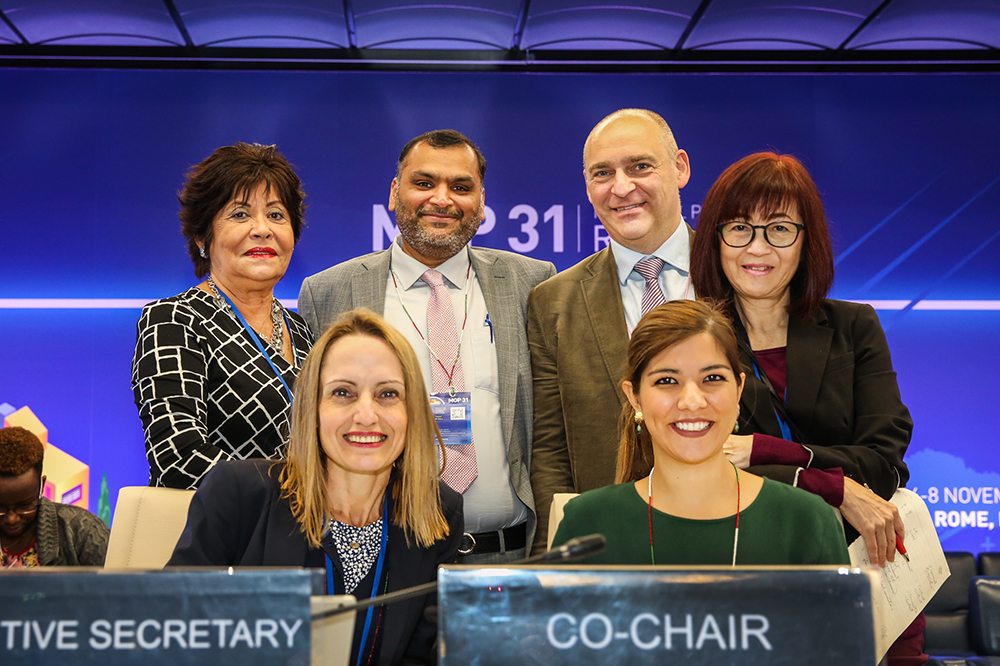
On Wednesday, 6 November 2019, delegates convened for the final day of the thirty-first Meeting of the Parties to the Montreal Protocol’s (MOP 31) preparatory segment in Rome, Italy.
In the morning, delegates addressed, among others:
- The Democratic People’s Republic of Korea’s (DPRK) risk of non-compliance with HCFC reduction targets for 2019;
- The Rome Declaration on the contribution of the Montreal Protocol to the sustainable cold chain to reduce food losses;
- The membership of Montreal Protocol bodies for 2020; and,
- The status of ratification of the Kigali Amendment.
Plenary adjourned for contact group and informal discussions to take place. Formal contact groups discussed the 2022 quadrennial assessment, the Multilateral Fund (MLF) Replenishment Study, and the Technology and Economic Assessment Panel (TEAP) Terms of Reference (ToR).
Plenary reconvened in the afternoon to hear an update from parties on outstanding agenda items, including:
- Process agents;
- Unexpected CFC-11 emissions;
- Methyl bromide stocks; and
- Compliance and data reporting issues.
As there were a number of outstanding agenda items, the preparatory segment was unable to conclude, and therefore will run in parallel to the high-level segment (HLS).
In the evening, the contact group on CFC-11, and the informal group on the MLF Executive Committee (ExCom) Membership met.
One draft decision, on the status of ratification of the Kigali Amendment, was forwarded to the HLS for adoption.
With a very full agenda and cognizant of time running out, delegates were constructive in their deliberations, with many recognizing that smaller formal and informal contact groups outside of plenary would be the most conducive setting to make progress. Throughout the day, whether in plenary or in contact groups, parties maintained that scientific vigilance must remain a cornerstone for the Protocol.
+ Visit the web coverage for Wednesday, 6 November 2019
+ Read the ENB report for Wednesday, 6 November 2019 in HTML or PDF format.
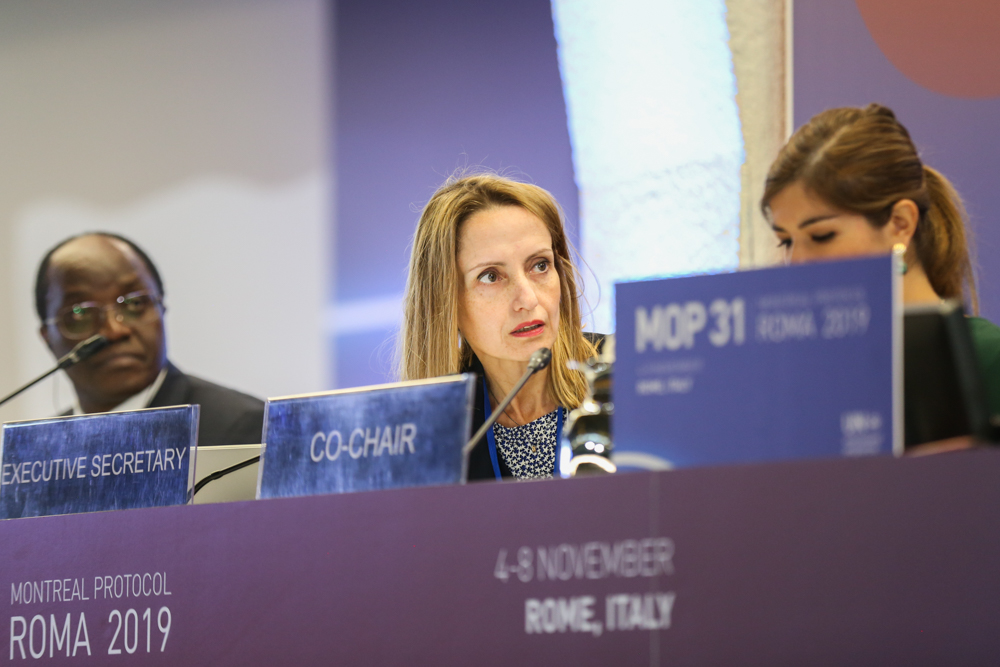
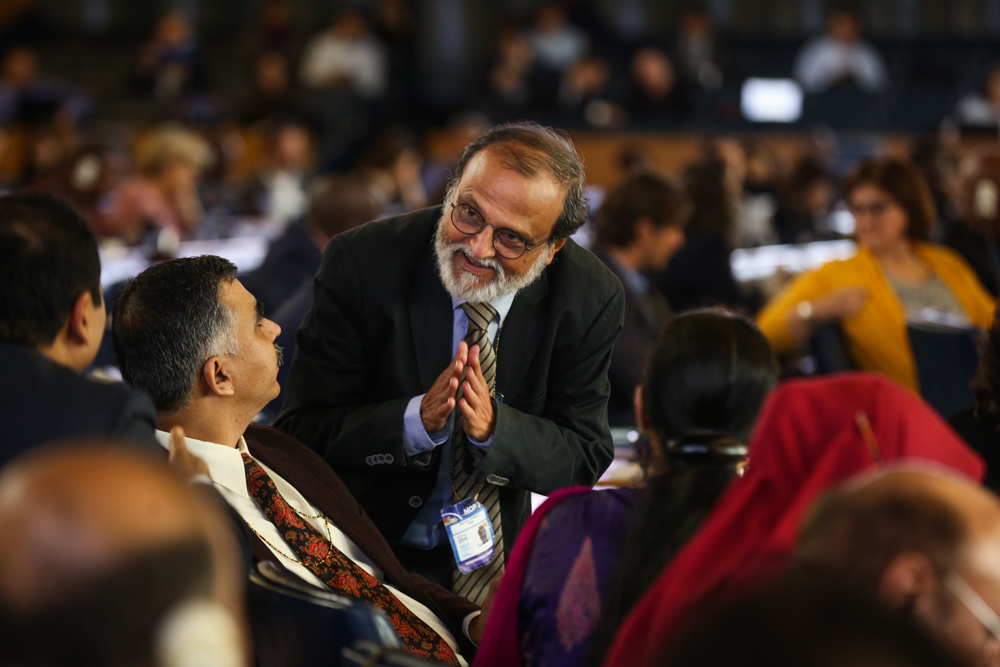
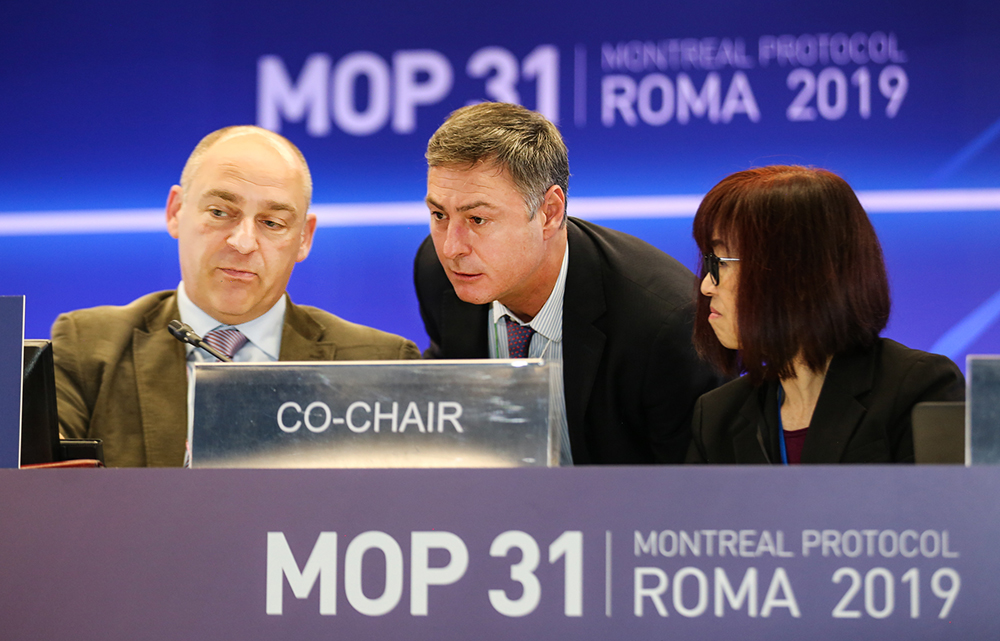
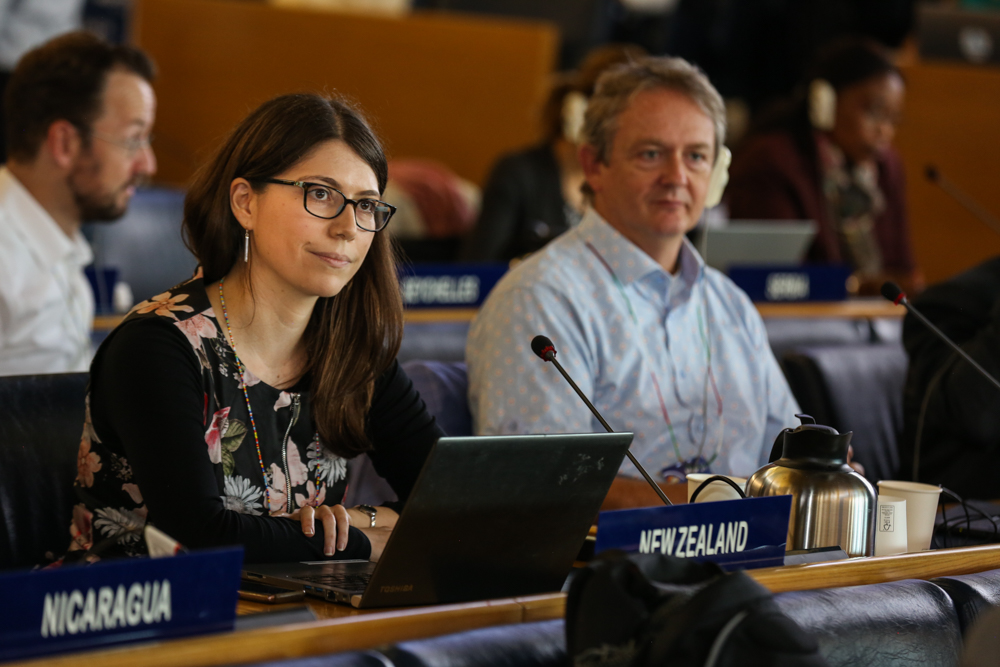
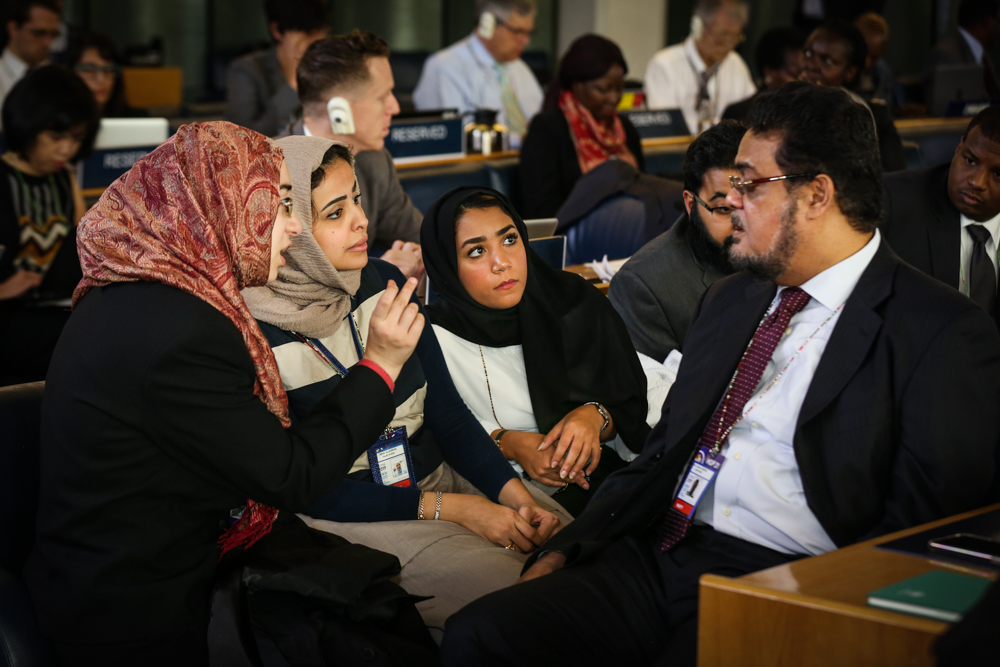
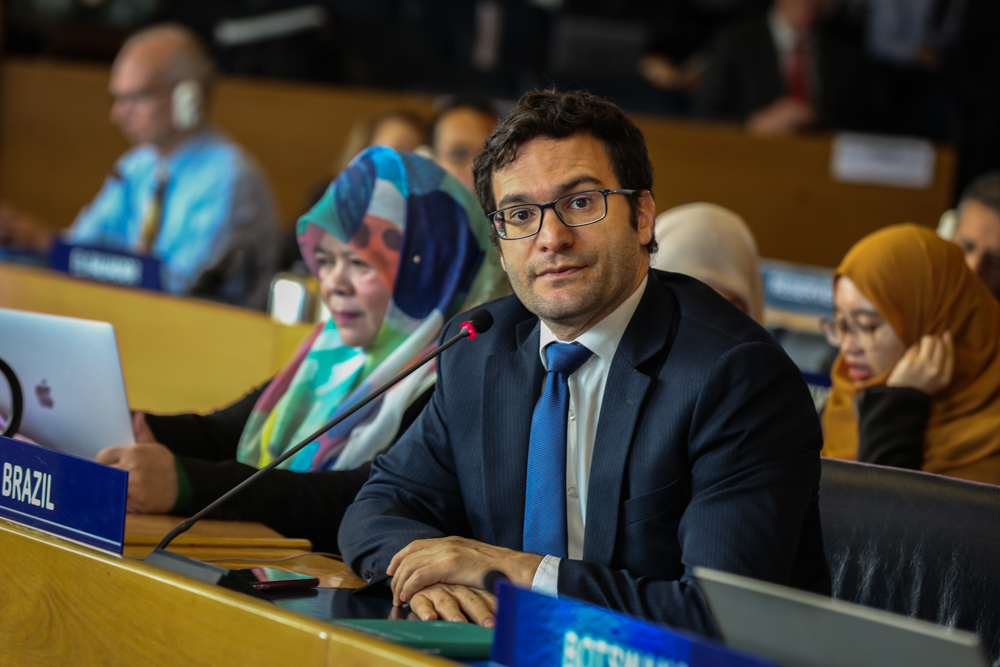
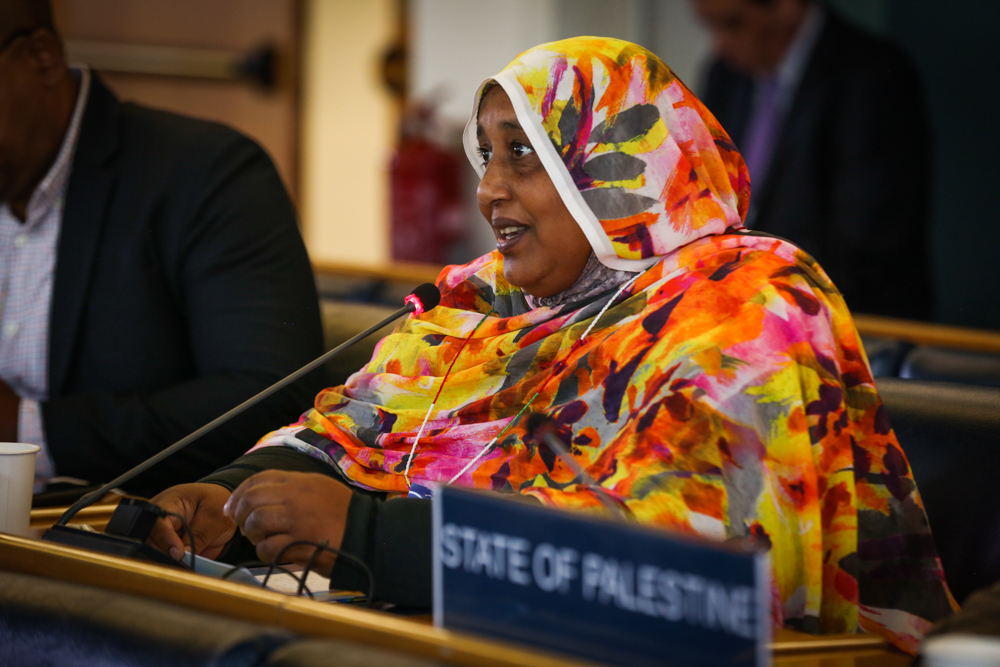
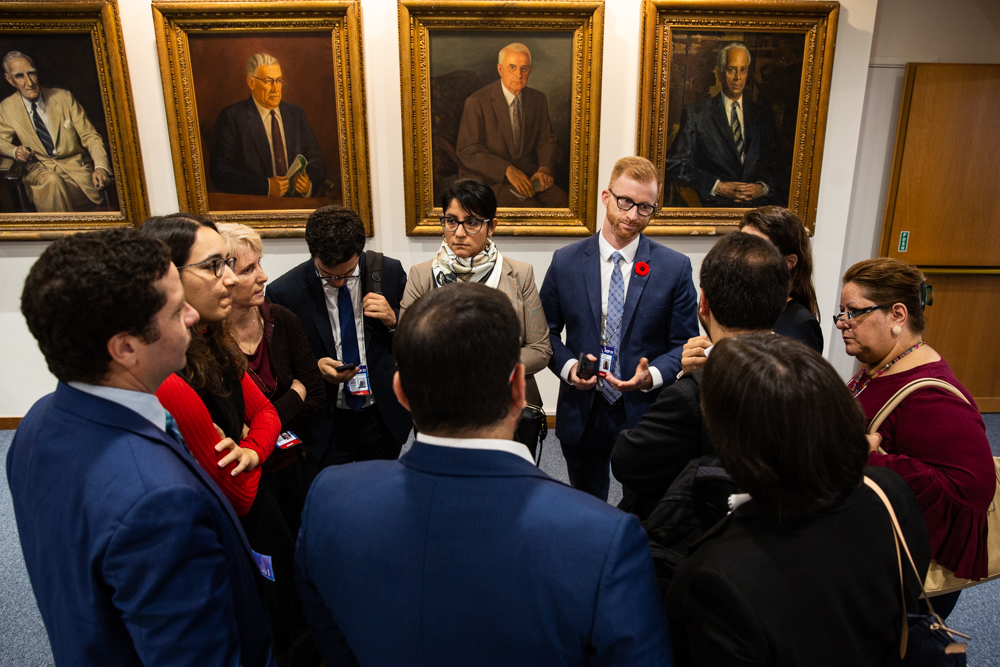
Contact Groups
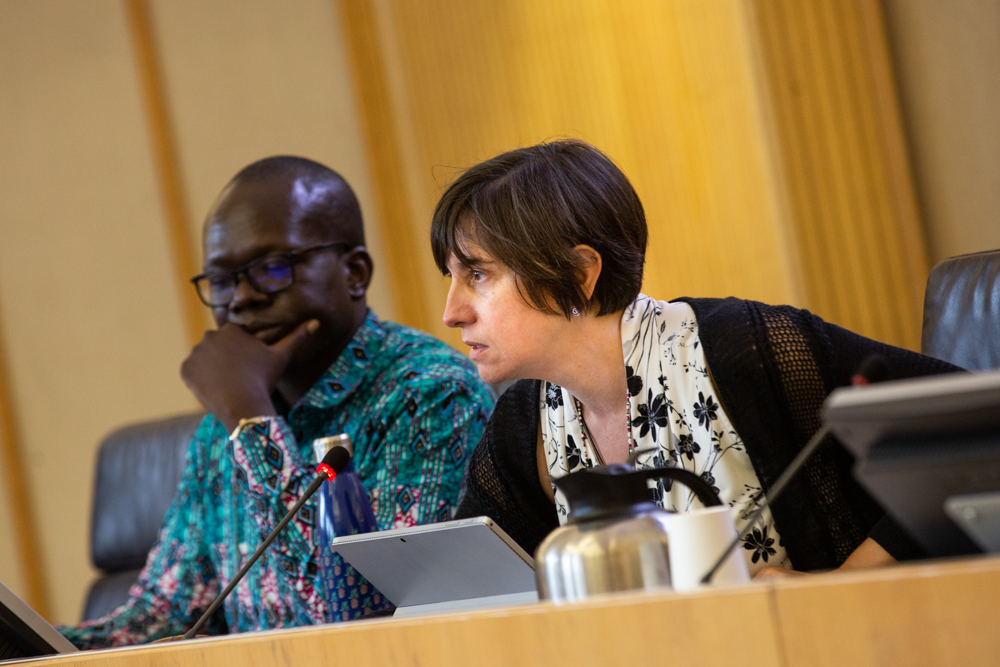

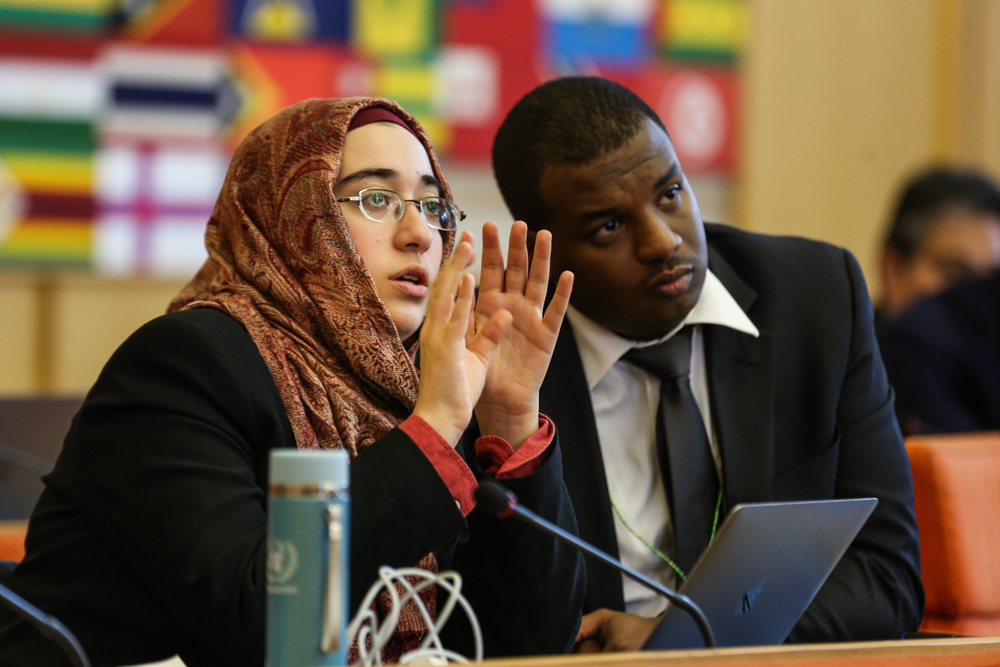
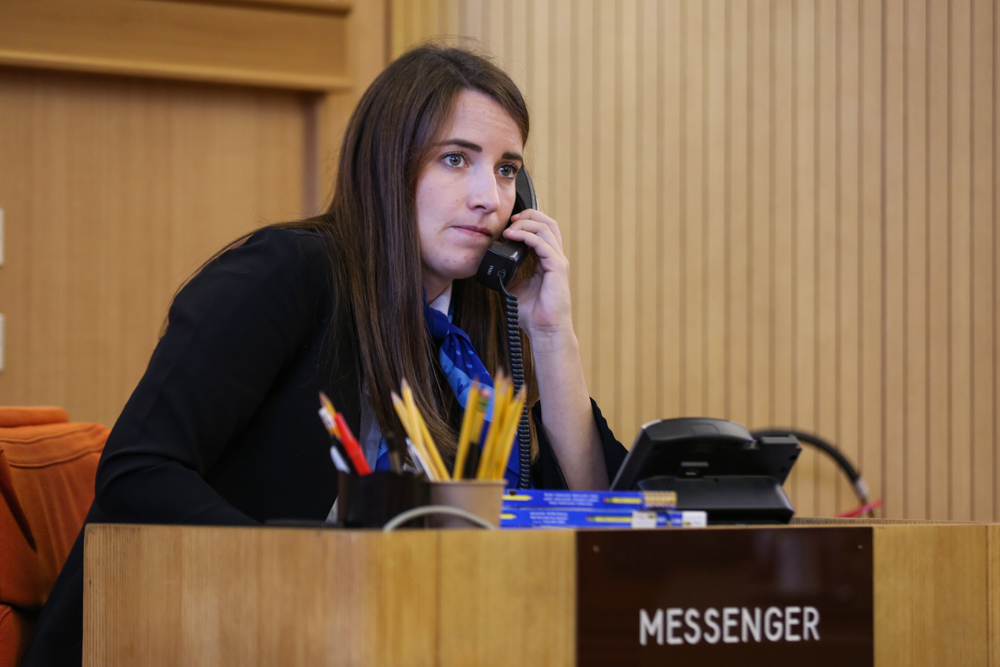
Highlights for Tuesday, 5 November 2019
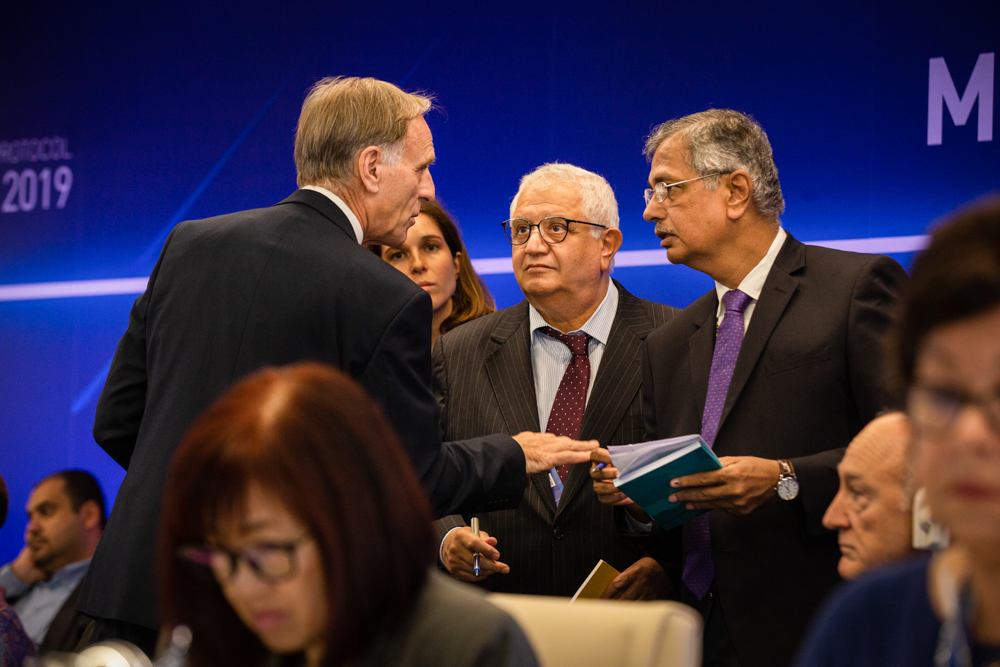
The thirty-first Meeting of the Parties to the Montreal Protocol (MOP 31) reconvened on Tuesday, 5 November 2019 at the UN Food and Agriculture Organization (FAO) in Rome, Italy.
In the morning, delegates heard reports from the contact groups and addressed:
- Stocks of methyl bromide;
- Development and availability of laboratory and analytical procedures that can be performed without using controlled substances under the Protocol; and
- Article 5 parties’ access to energy-efficient technologies in the refrigeration, air-conditioning and heat-pump (RACHP) sectors.
In the afternoon, discussion continued on energy-efficiency technologies, and delegates also addressed:
- Terms of reference, composition, balance, fields of expertise and workload of the Technology and Economic Assessment Panel (TEAP);
- Membership of the Multilateral Fund (MLF) Executive Committee (ExCom);
- Safety standards;
- Initial assessment by the Scientific Assessment Panel (SAP) and the TEAP of five volatile fluoroorganic and related compounds found in the Arctic;
- Consideration of nominations to the Assessment Panels;
- report of the Implementation Committee (ImpCom); and
- The Democratic People’s Republic of Korea’s (DPRK) risk of non-compliance with HCFC reduction targets for 2019.
Contact groups on the 2022 quadrennial assessment, and CFC-11, as well as the Budget Committee met during the day. The agenda item on the request by Azerbaijan to be included among the parties to which the phase-down schedule for hydrofluorocarbons was opened and closed due to the fact that Azerbaijan is not present at MOP 31.
As parties continued their deliberations, many could be heard in the corridors wondering how to balance the need to strengthen monitoring and compliance in the Protocol without creating additional reporting burdens for Article 5 countries. Some cautioned that resources will need to be found to be able to shoulder the additional requirements.
+ Visit the web coverage for Tuesday, 5 November 2019
+ Read the ENB report for Tuesday, 5 November 2019 in HTML or PDF format.
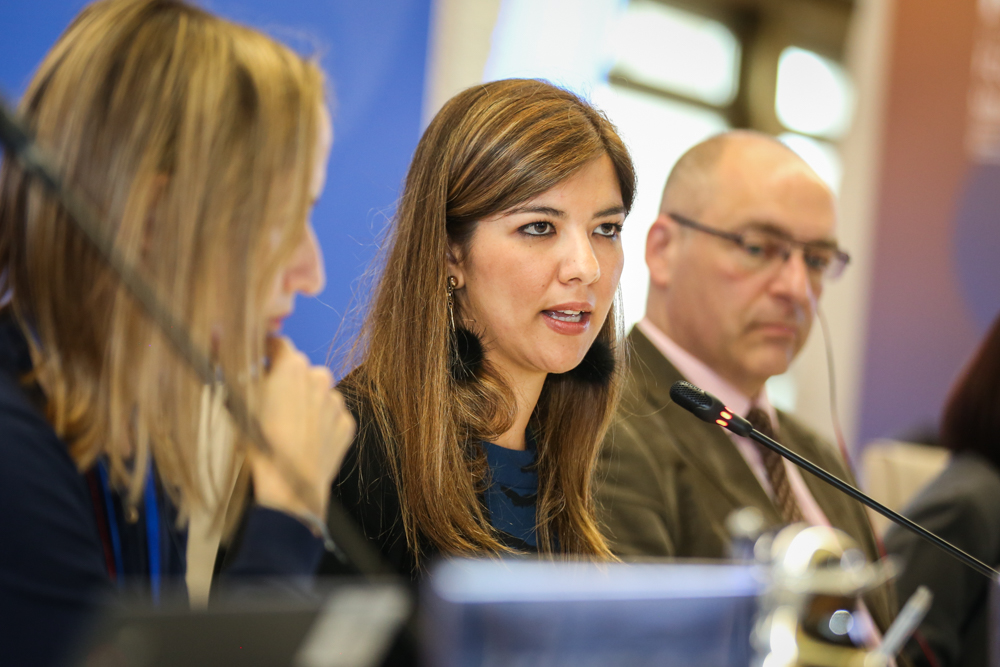
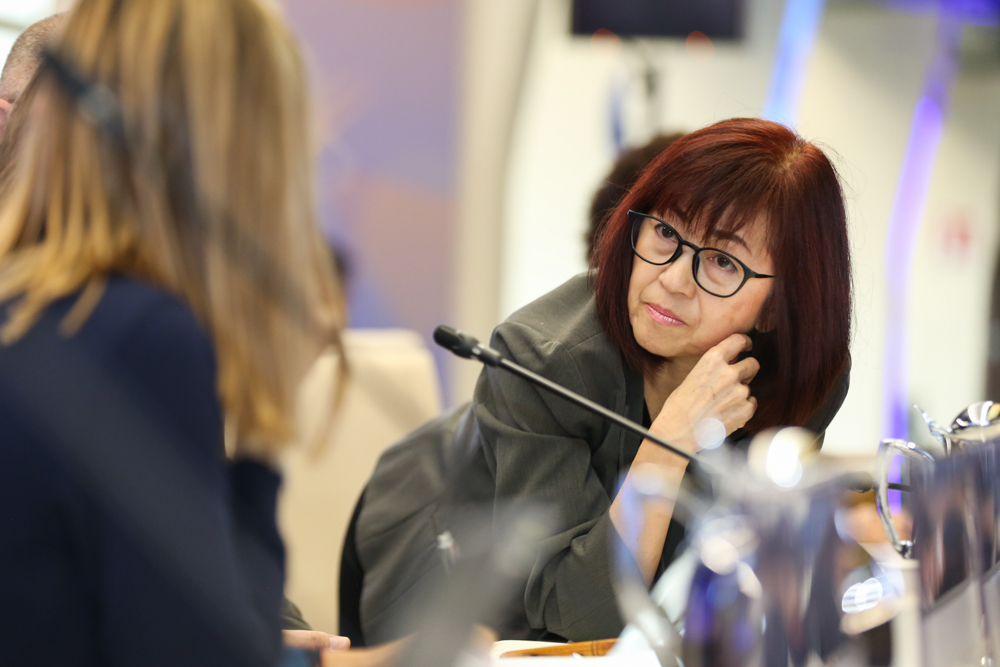
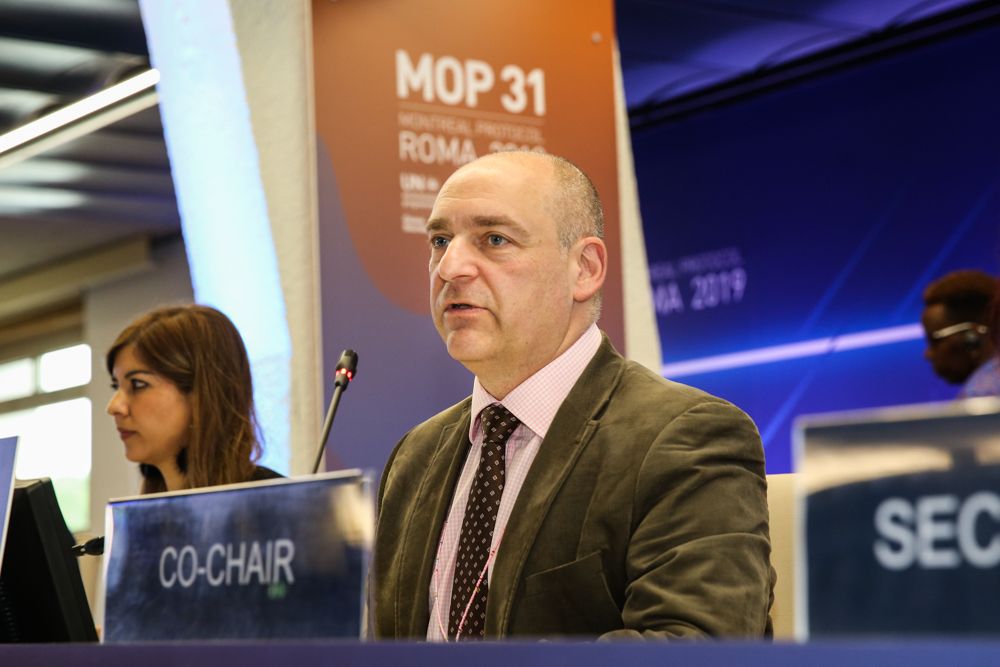
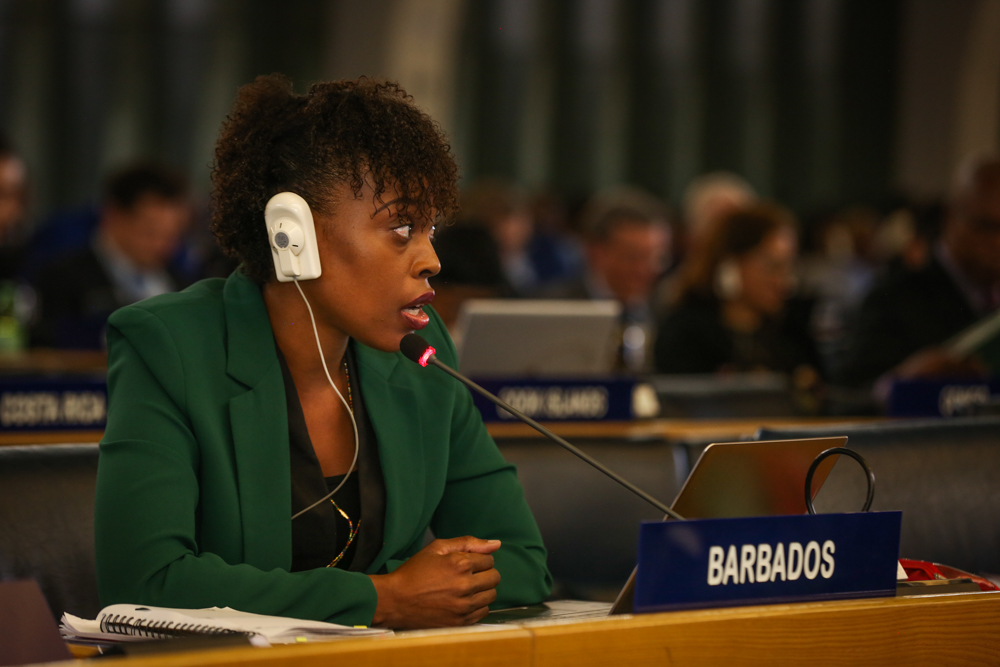
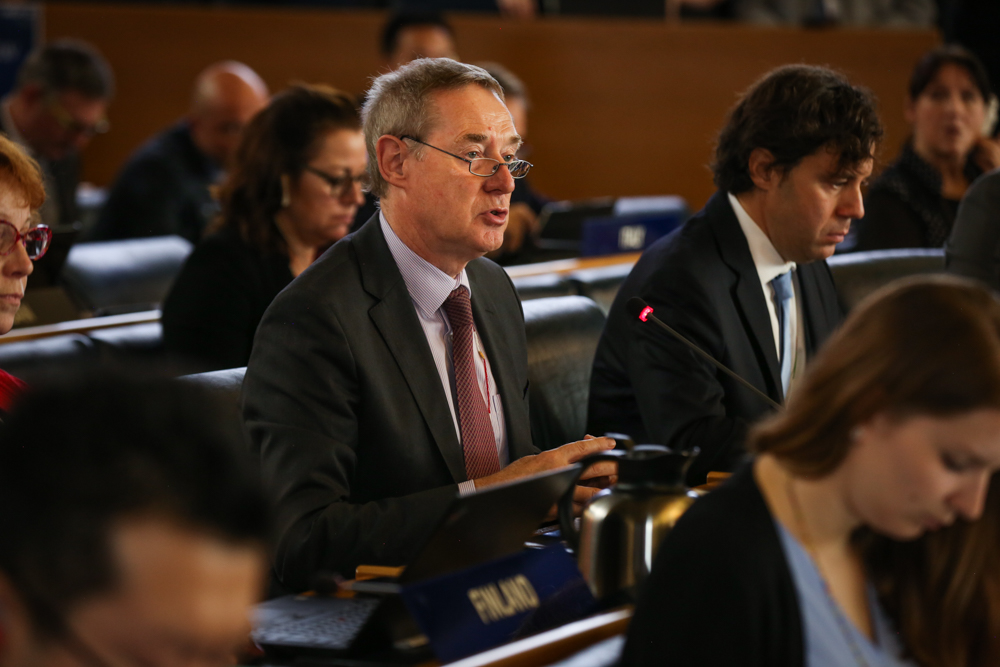
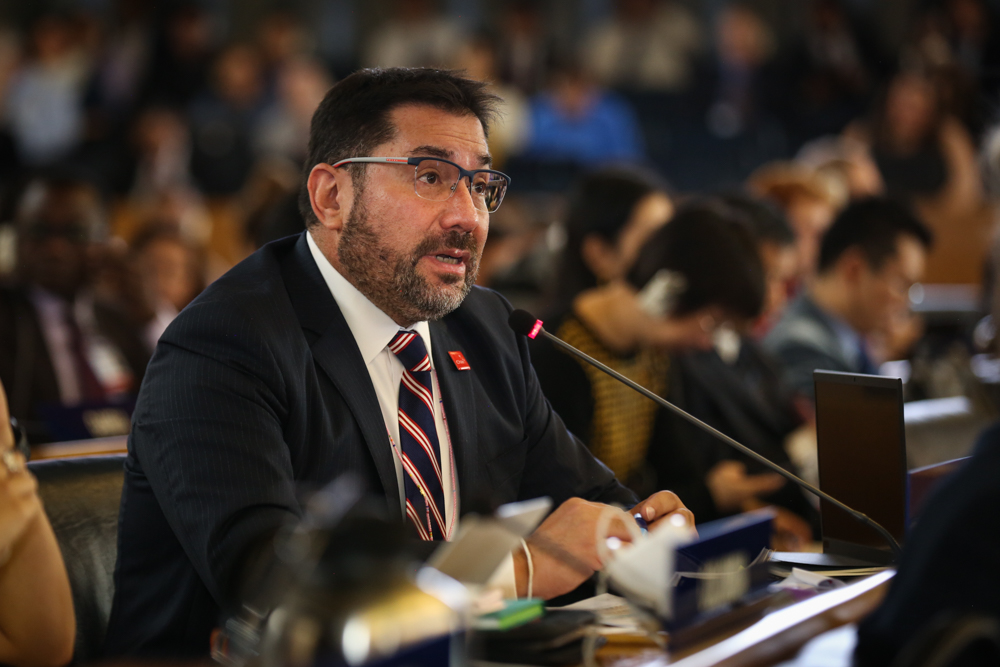
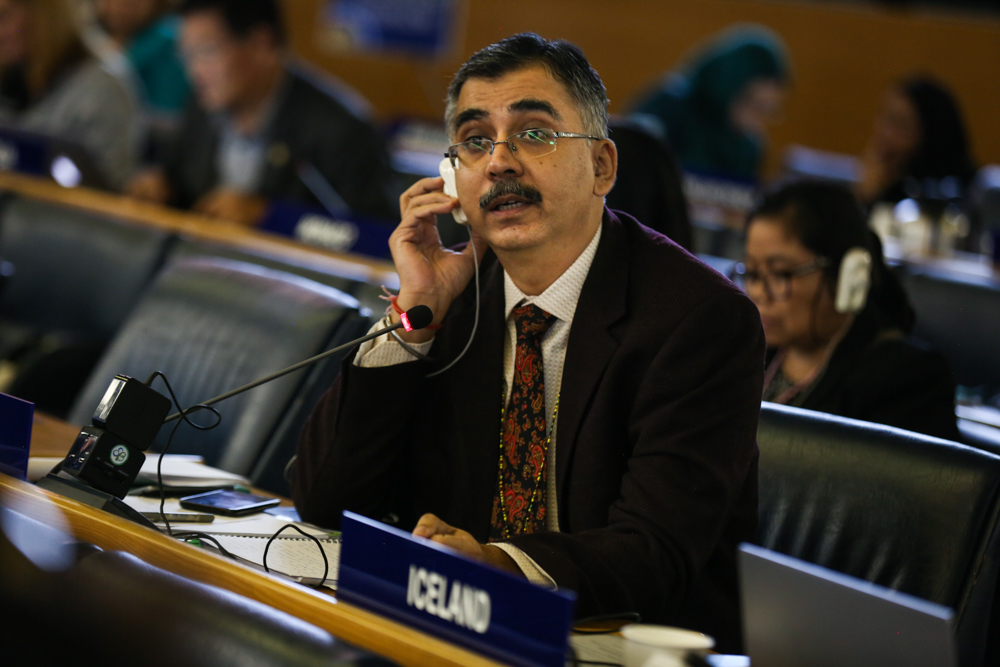
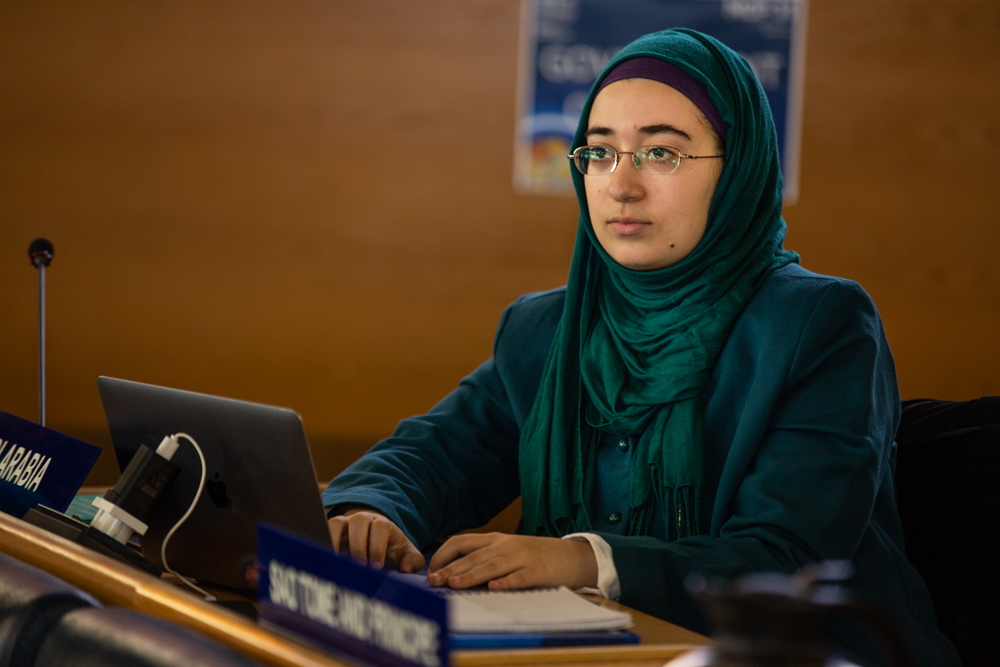
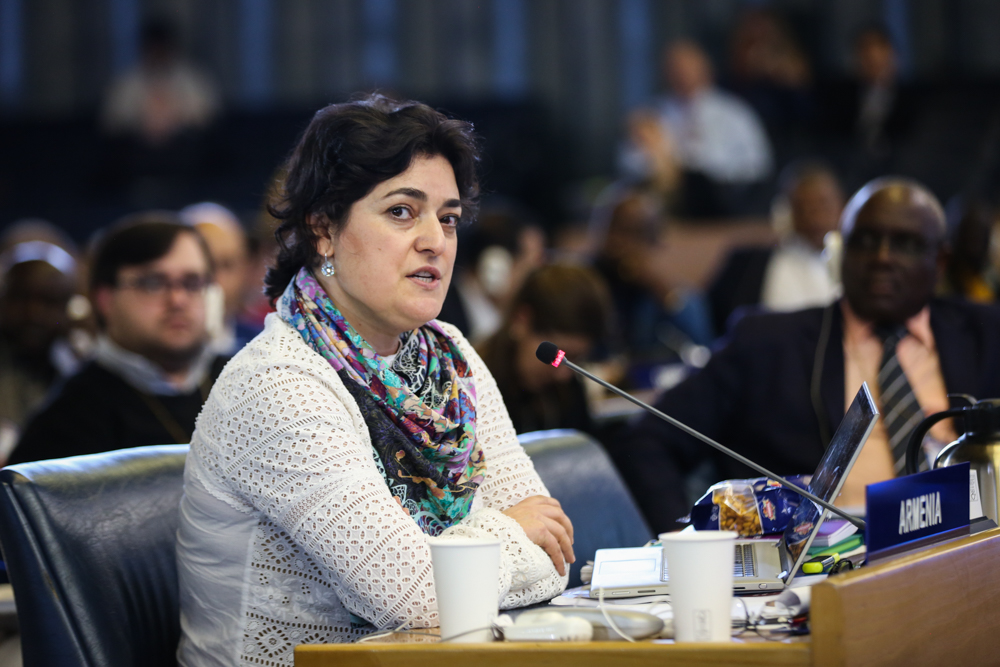

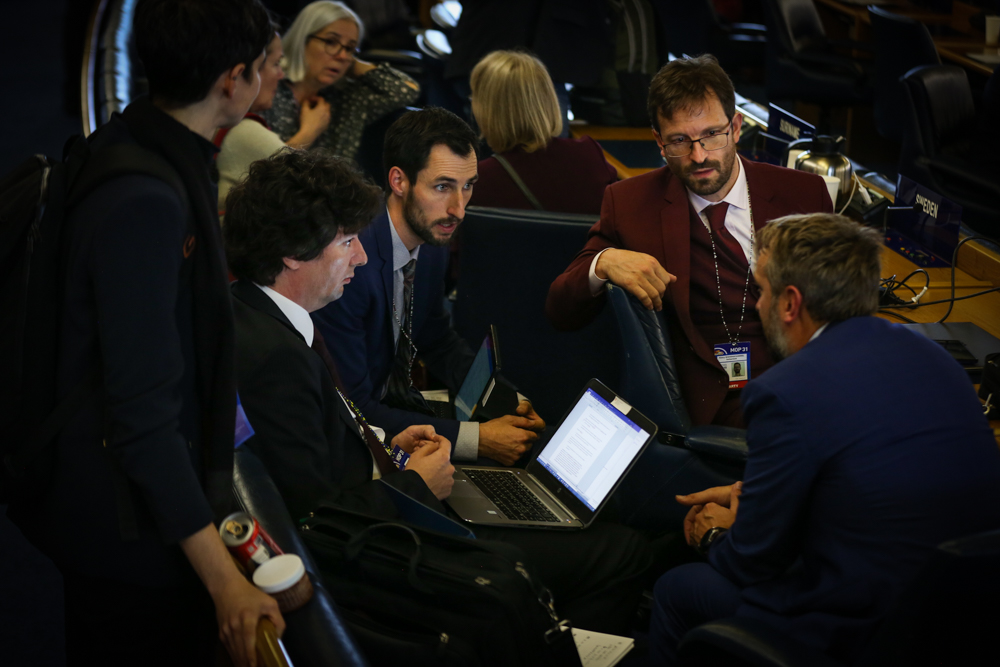
CFC-11 Contact Group
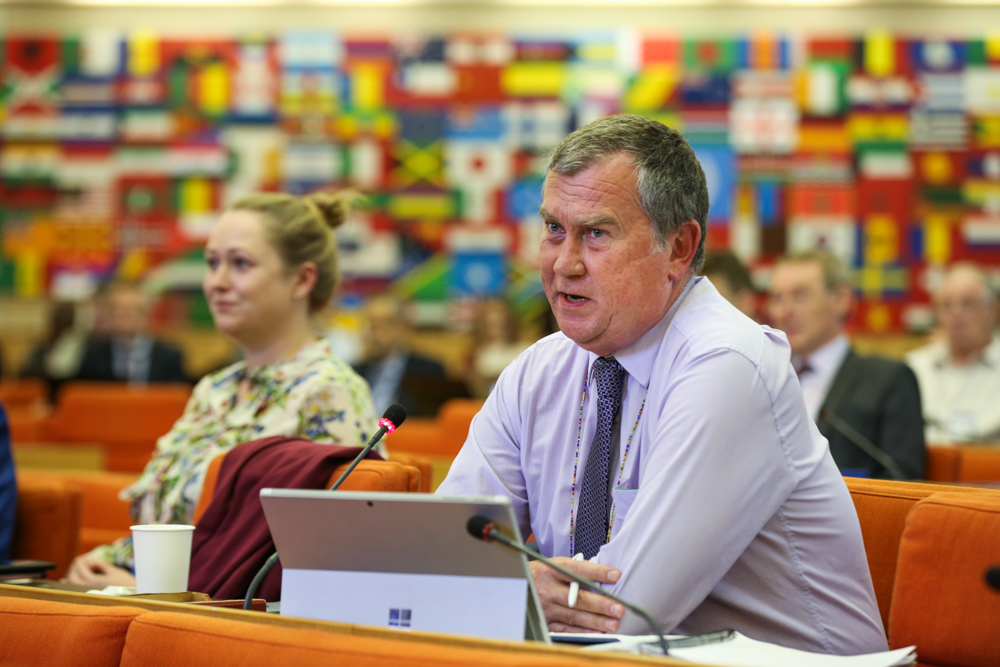
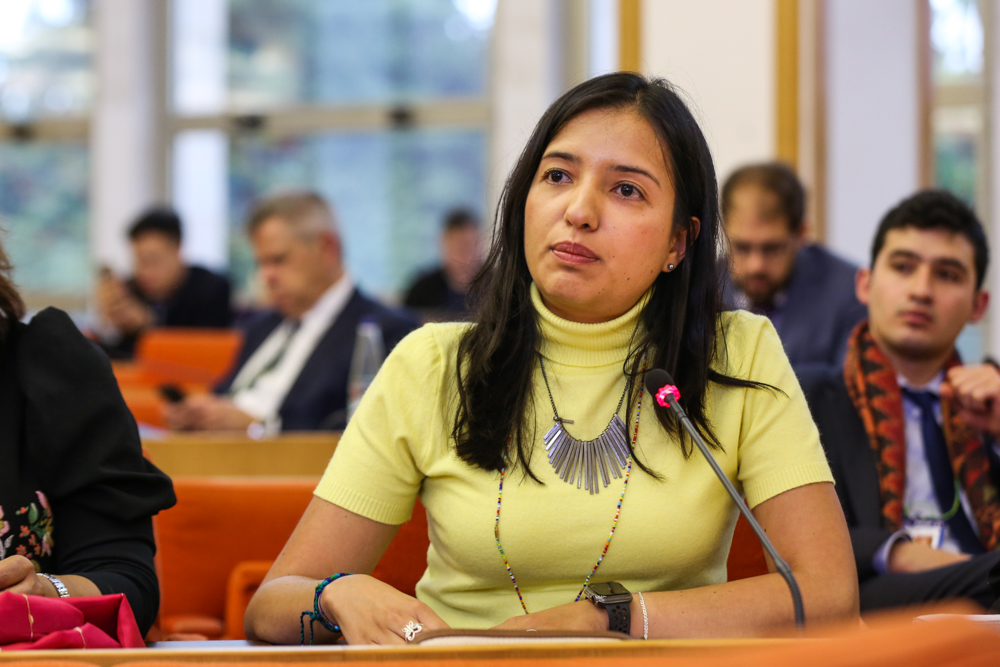
Highlights for Monday, 4 November 2019
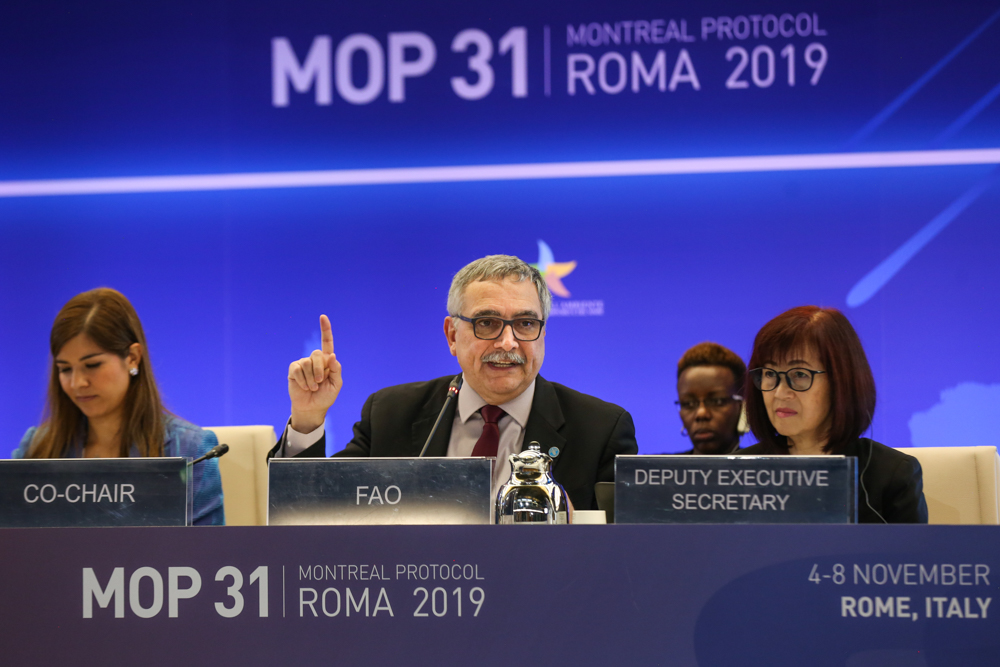
The thirty-first Meeting of the Parties to the Montreal Protocol (MOP 31) opened its preparatory segment on Monday, 4 November 2019 at the UN Food and Agriculture Organization (FAO) in Rome, Italy.
In his opening remarks, Roberto Morassut, Italian Undersecretary of State, Ministry of the Environment, Land and Sea, stated that the Montreal Protocol is an inspiration for a transition to a sustainable world. René Castro-Salazar, Assistant Director-General, Climate, Biodiversity, Land and Water Development, FAO, added that pooling the abilities of environment and agriculture ministers can make strides towards fully eliminating food loss. Tina Birmpili, Executive Secretary, Ozone Secretariat, said parties need to collectively decide how to move the Protocol forward to address new challenges.
The main topic of discussion was the agenda item on unexpected emissions of trichlorofluoromethane (CFC-11). The Assessment Panels presented their report on the issue, China presented on their efforts to address the issue, and parties deliberated on the way forward. Highlights of the discussion include:
- There has likely been a resumption of new CFC-11 production for closed cell foams;
- China has reinforced and stepped up its law enforcement to ensure it fulfils its obligations under the Protocol;
- Whether the contact group should be forward-looking and focus only on institutional matters and processes; and
- The goal is to ensure that the problem is fixed, with a view to assessing what short- or long-term actions are necessary.
Delegates addressed a range of topics throughout the day. These included agenda items on:
- The terms of reference (ToR) for the study on the 2021–2023 replenishment of the Multilateral Fund (MLF);
- The potential areas of focus for the 2022 quadrennial assessment reports of the Assessment Panels;
- Ongoing reported emissions of carbon tetrachloride (CTC); and
- Nominations for critical-use exemptions (CUEs) for methyl bromide for 2020 and 2021.
Two contact groups on the potential areas of focus for the 2022 quadrennial assessment reports and on CFC-11 were established, as well as the budget committee.
Delegates arriving at MOP 31 faced an extremely full agenda. With the opening statements reminding them of the recent challenges facing the Protocol, many were heard remarking that introspection is required to assess what needs to be altered in light of changing circumstances and collectively agree on a way forward, especially if parties want to walk away at the end of the week saying “Veni, Vidi, Vici”—I came, I saw, I conquered.
+ Visit the web coverage for Monday, 4 November 2019
+ Read the ENB report for Monday, 4 November 2019 in HTML or PDF format.
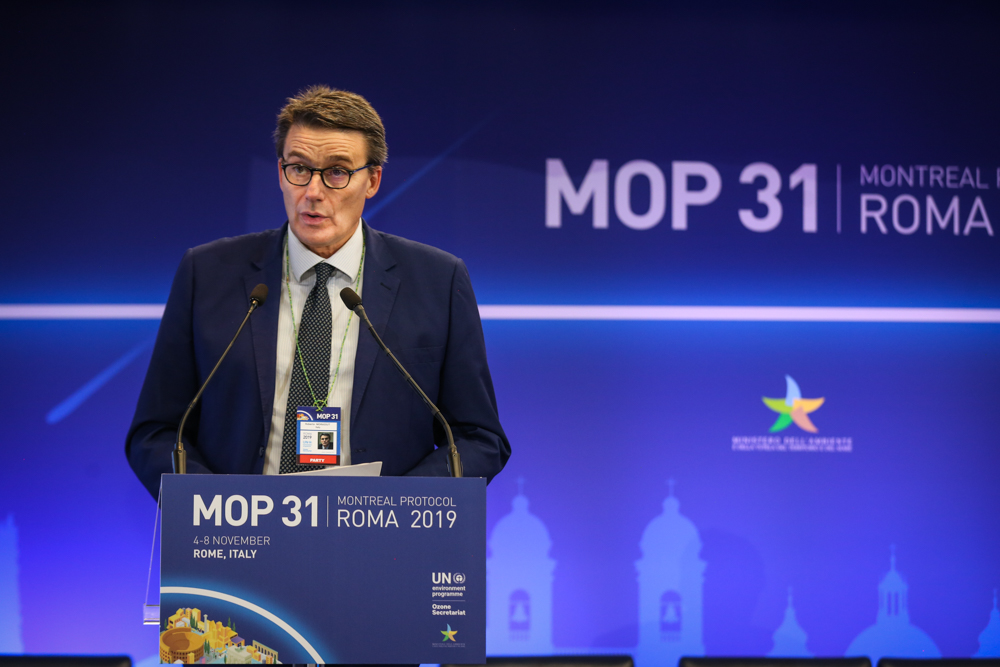
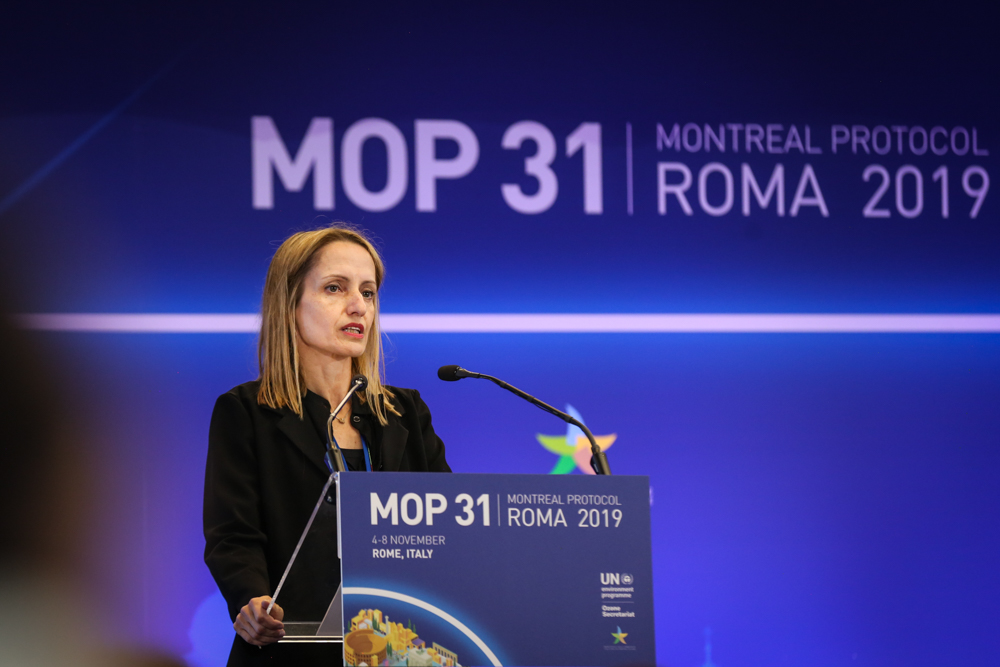
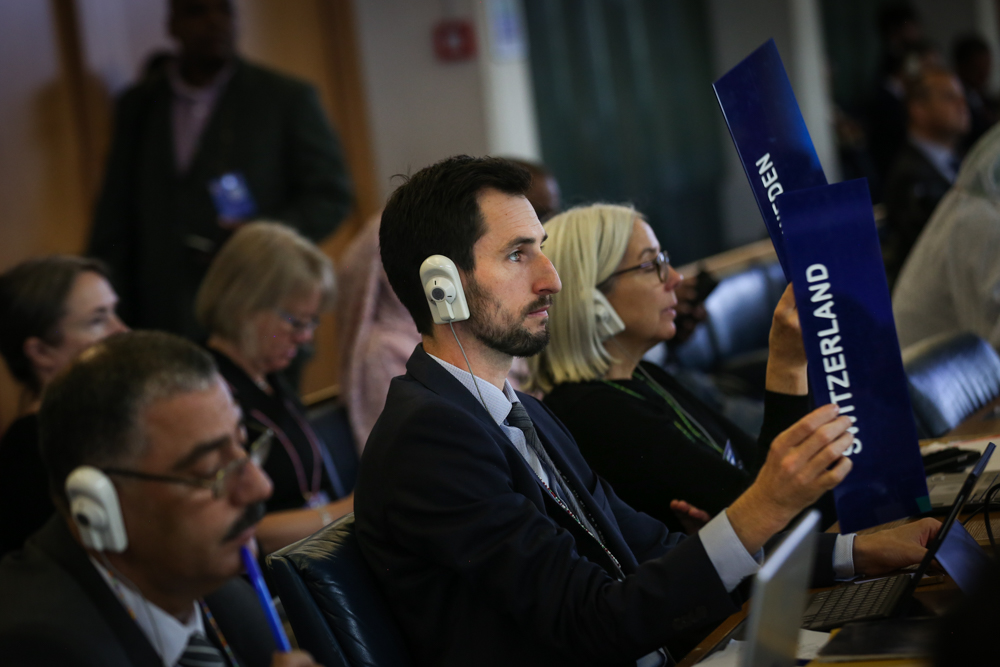
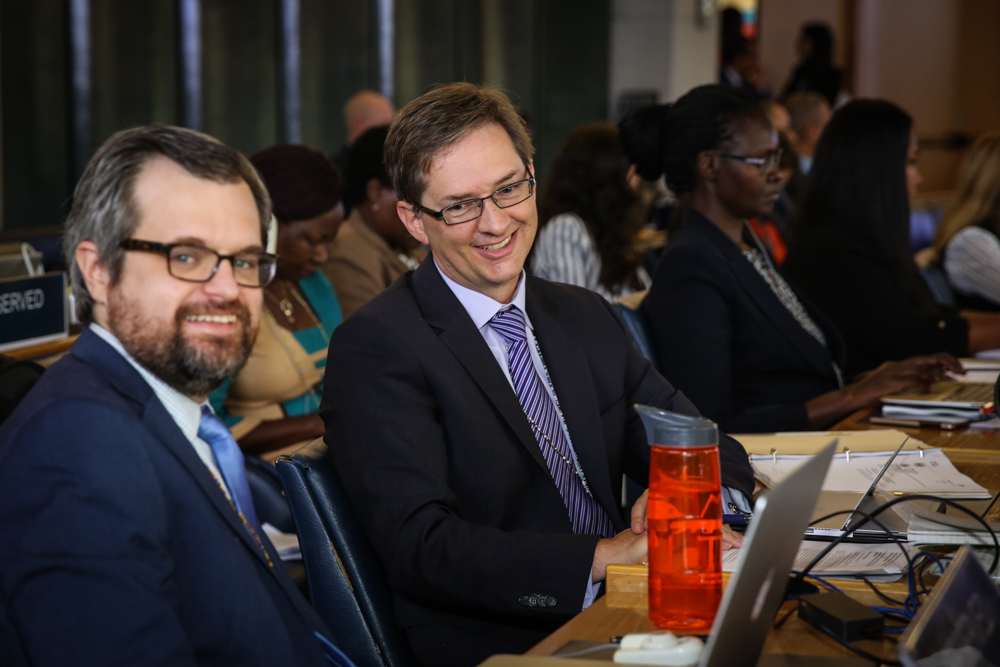
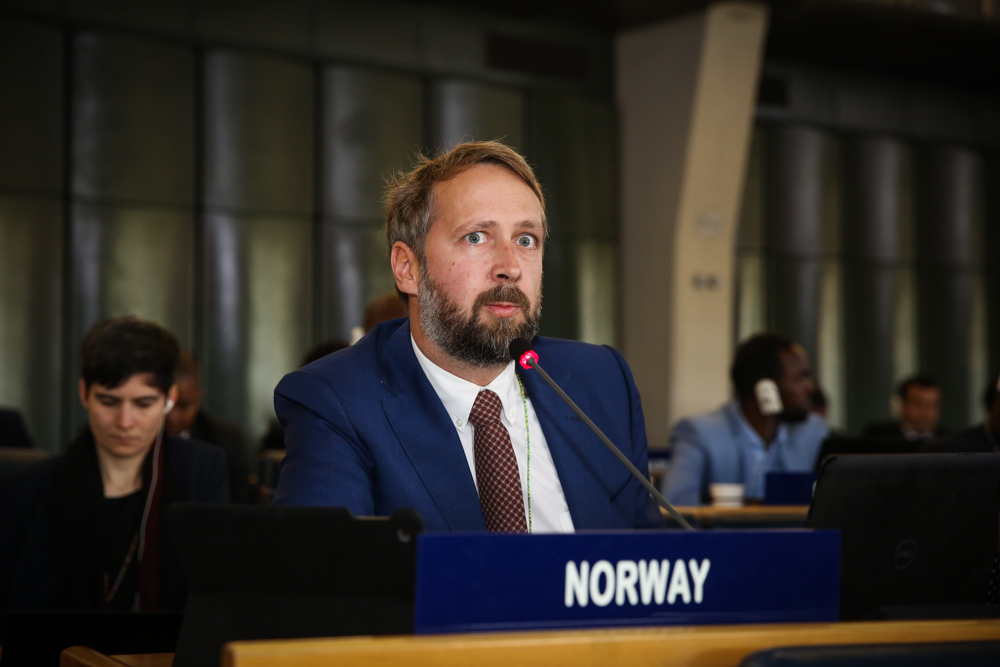
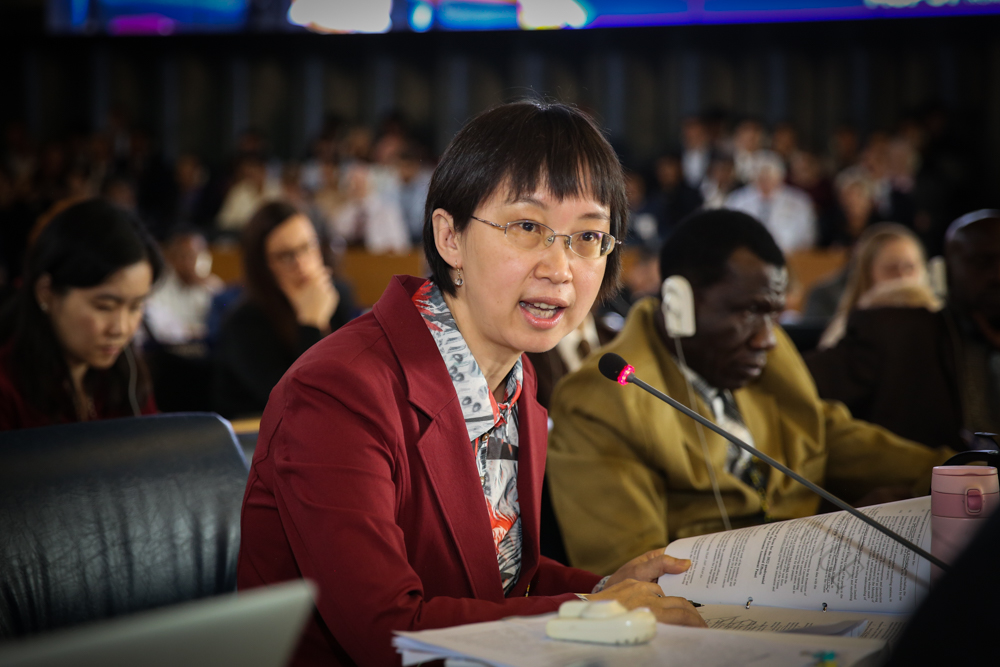
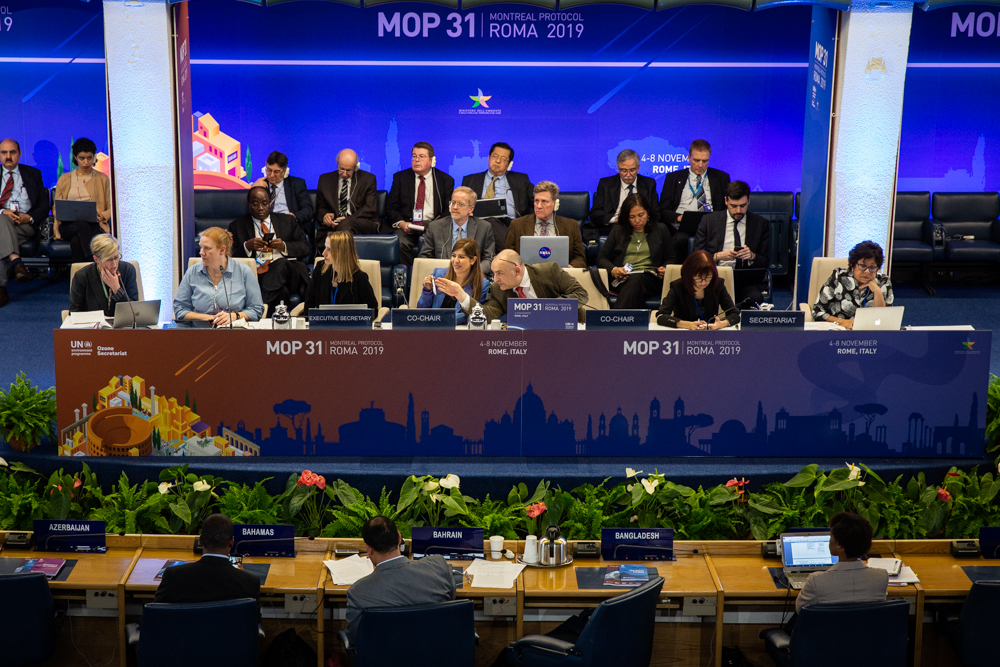
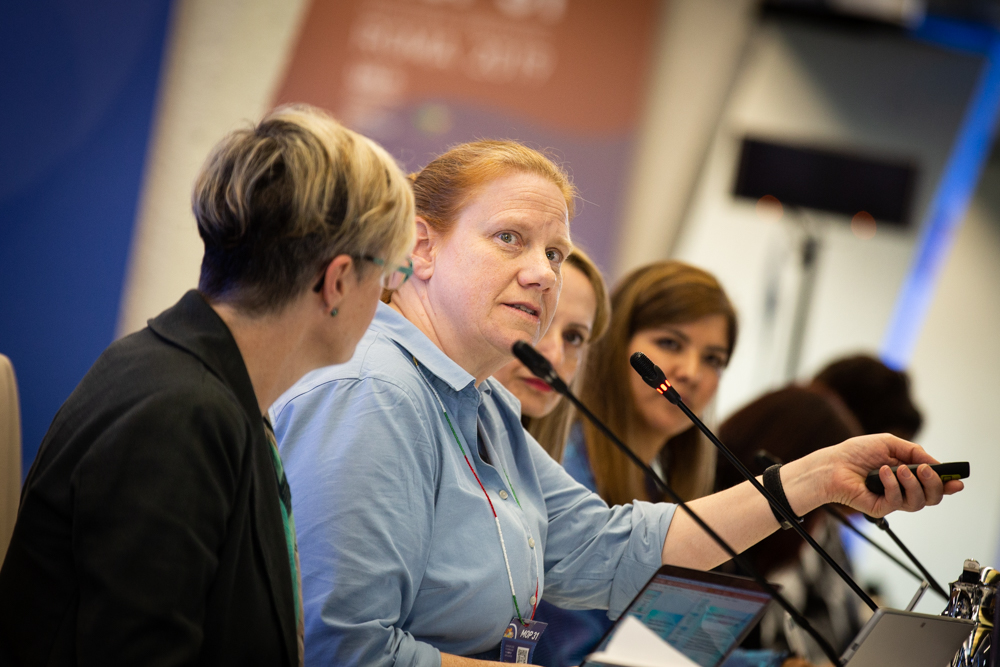
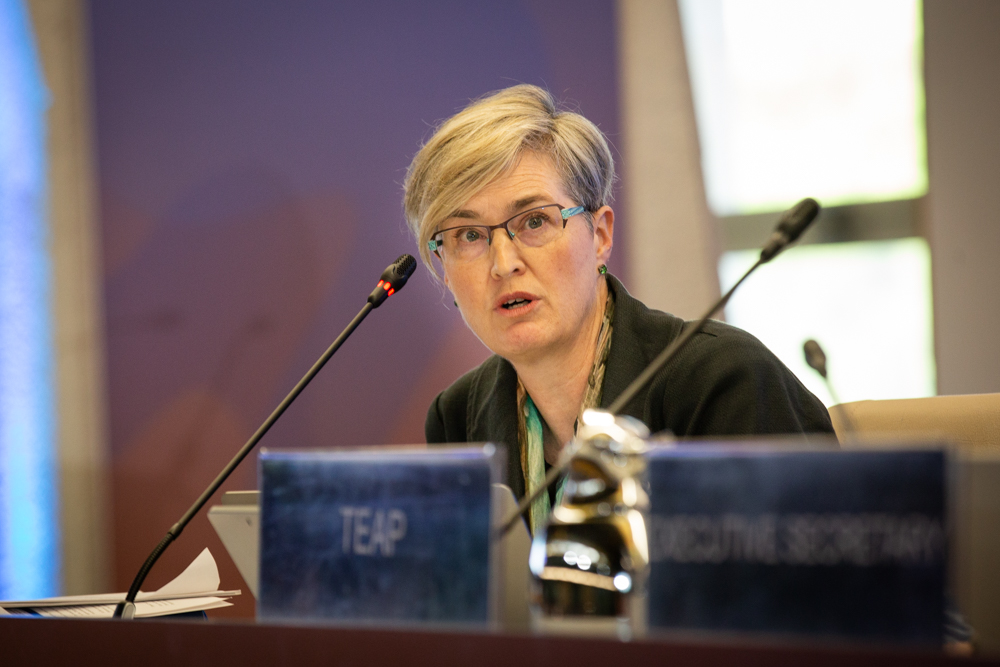
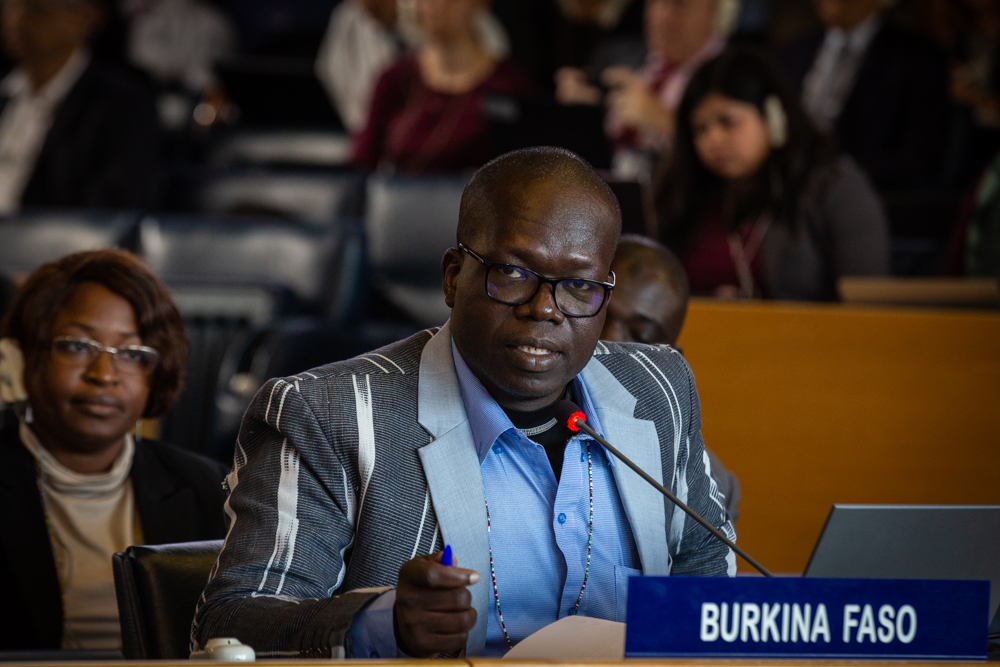
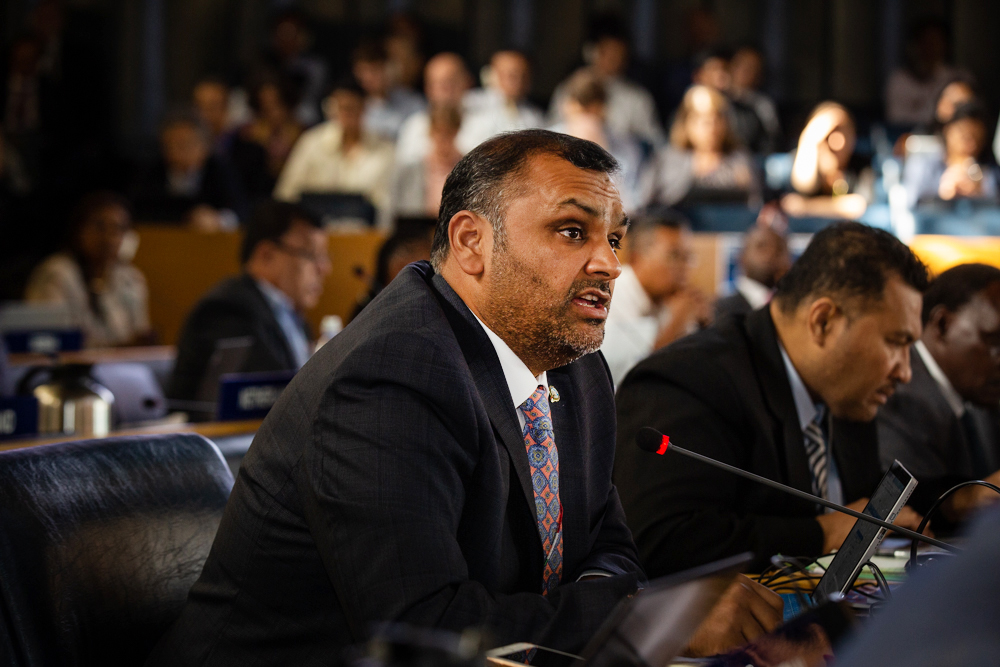
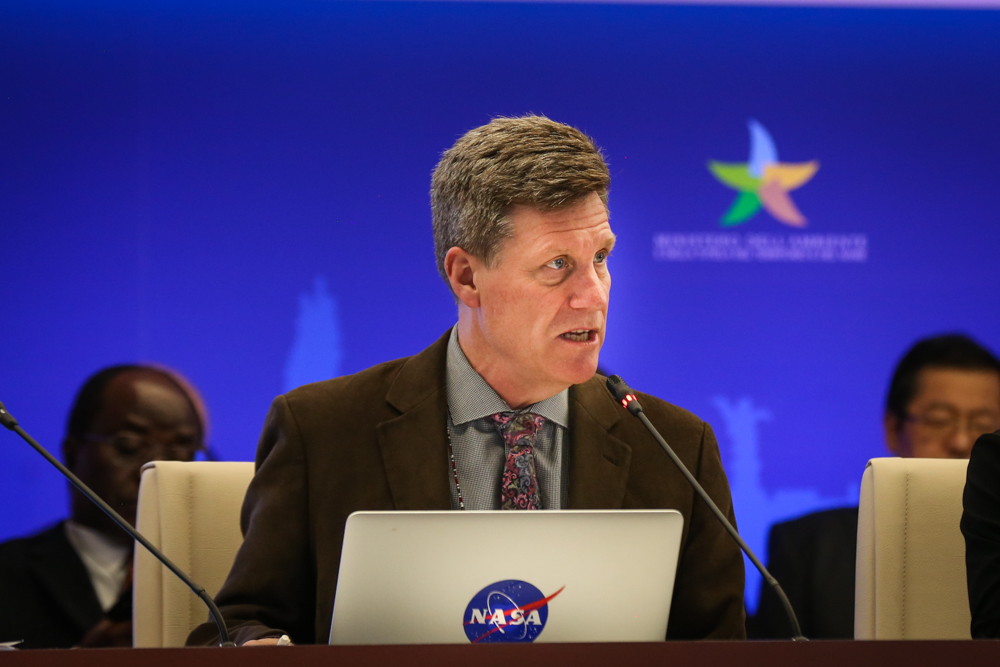
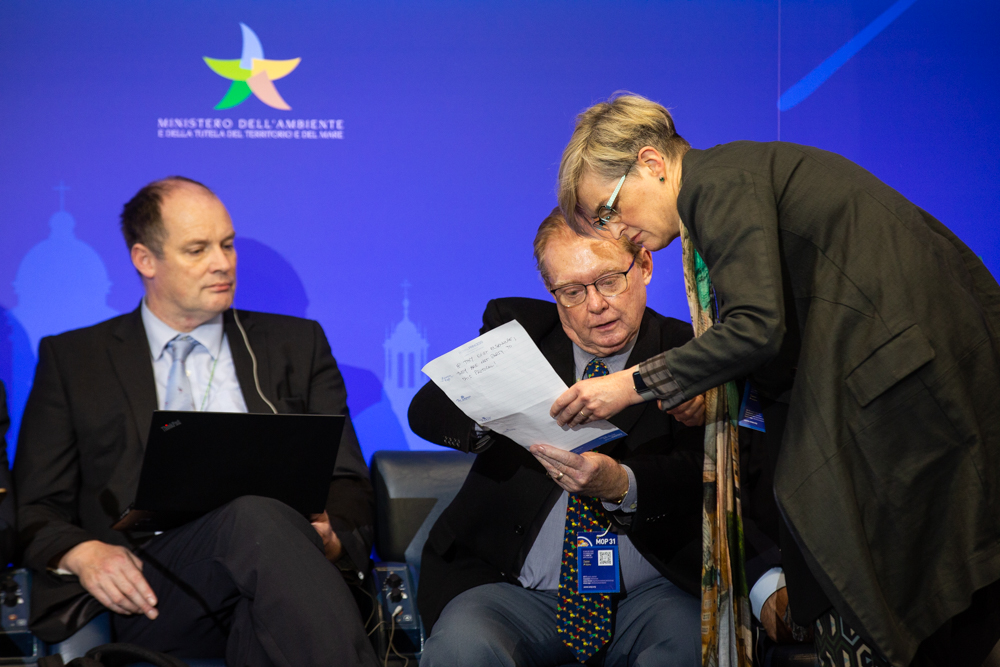
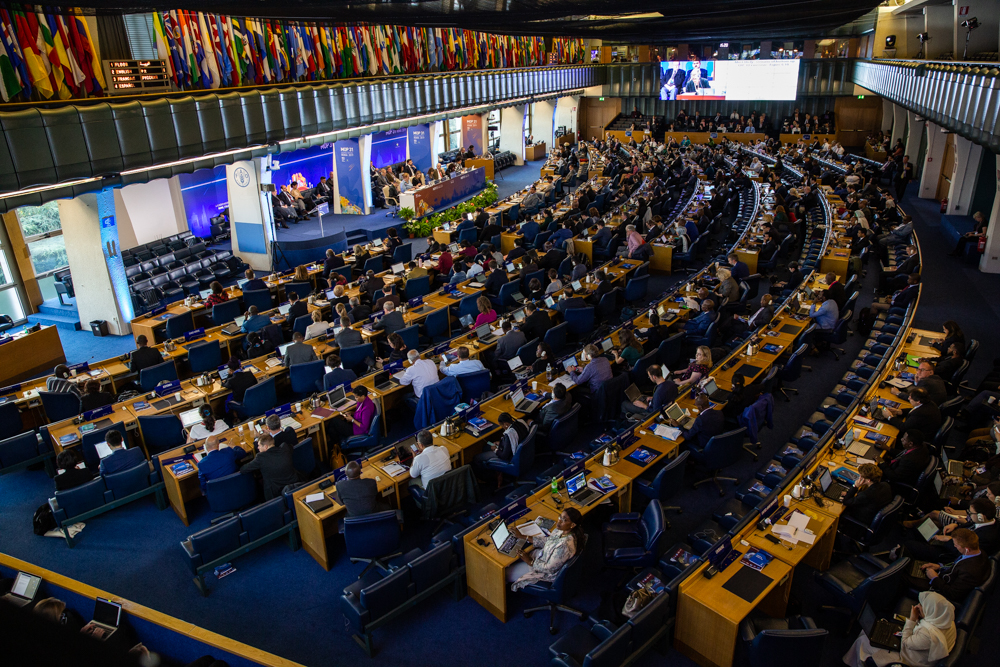
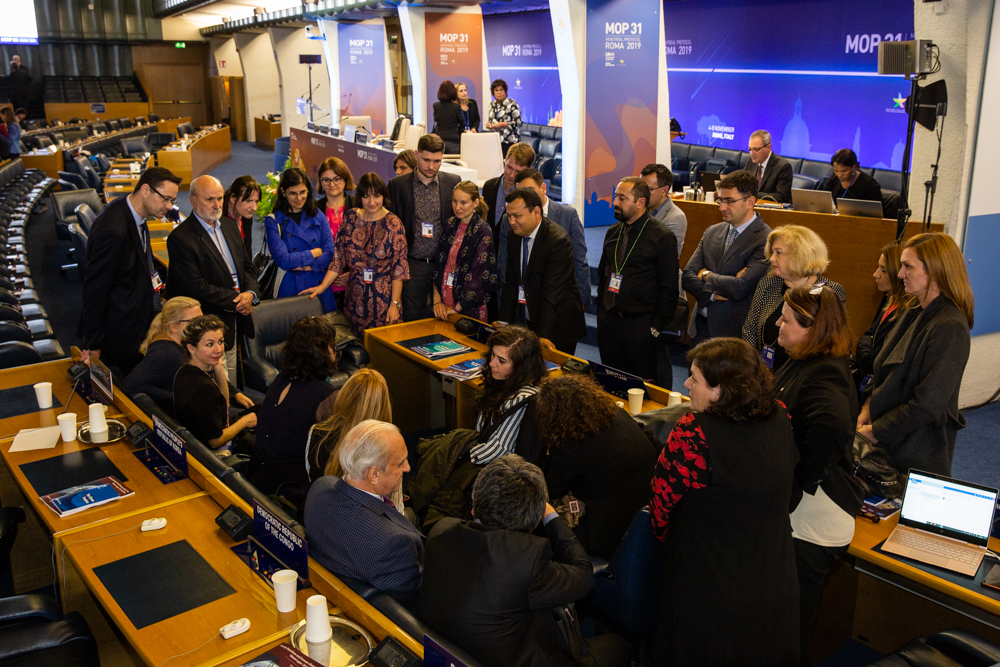
Around the Venue


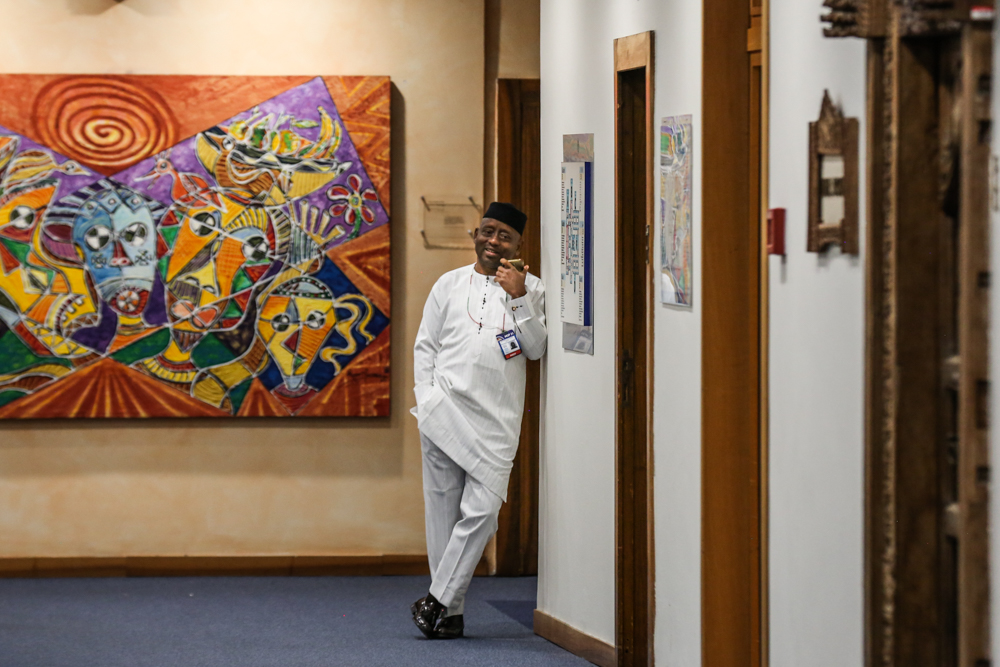




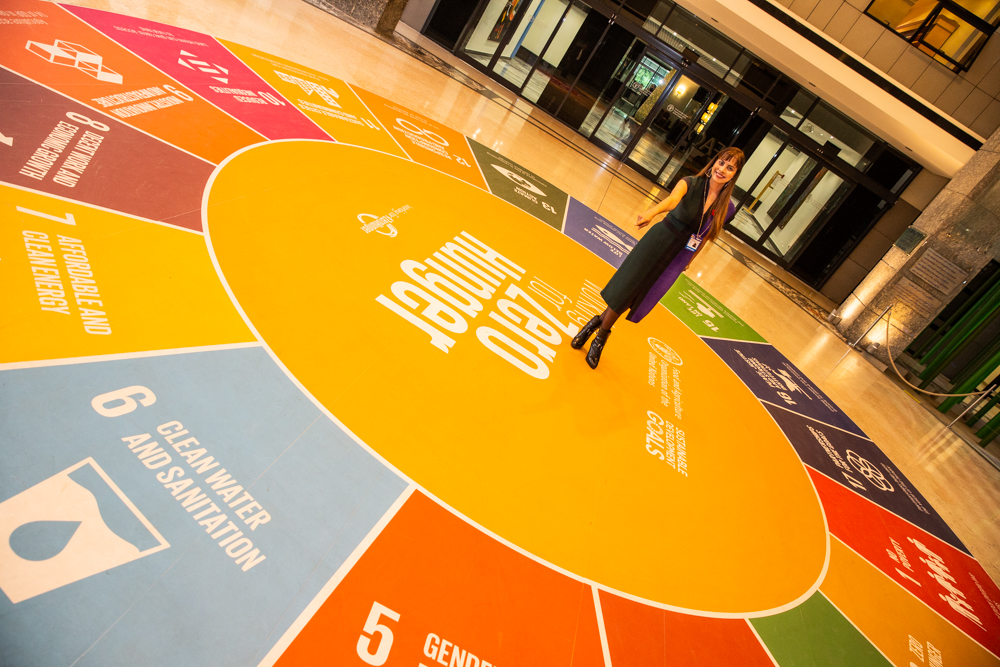

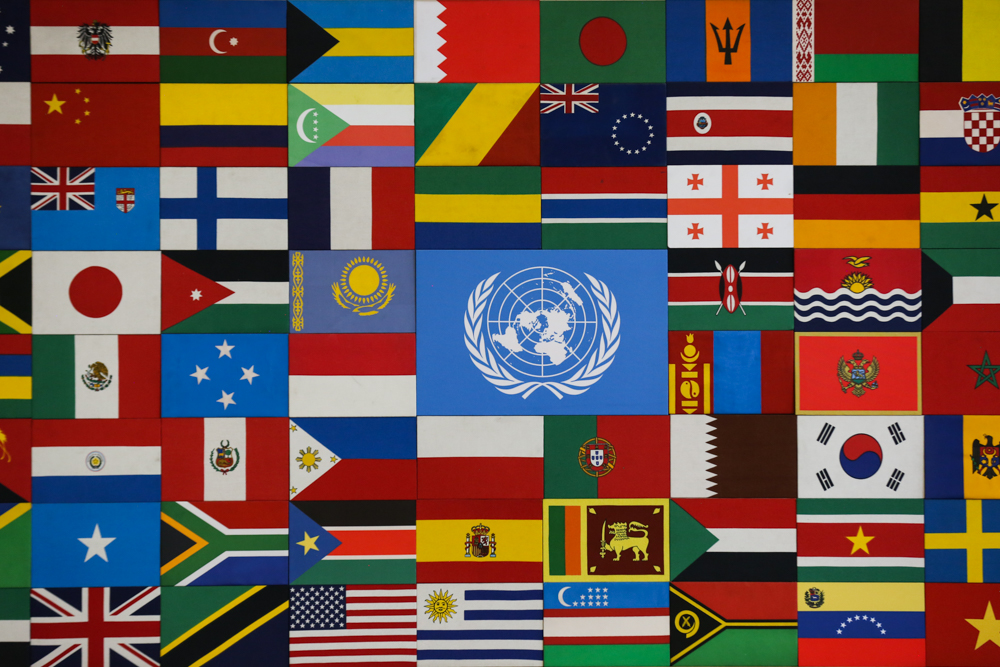
DOWNLOAD ENB REPORTS
MOP 31 Resources
IISD ENB/ENB+ Meeting Coverage
- 41st Meeting of the Open-Ended Working Group of the Parties to the Montreal Protocol on Substances that Deplete the Ozone Layer (OEWG 41), 1-5 July 2019, UN Conference Centre (UNCC), Bangkok, Thailand
- MOP 30, 5-9 November 2018, Quito, Ecuador
- OEWG 40, 11-14 July 2018, Vienna, Austria
- 11th Meeting of the Conference of the Parties to the Vienna Convention for the Protection of the Ozone Layer (COP 11) and MOP 29, 20-24 November 2017, Headquarters of the International Civil Aviation Organization (ICAO), Montreal, Canada
- Workshop on Safety Standards Relevant to the Safe Use of Low Global Warming Potential (GWP) Alternatives to Hydrofluorocarbons (HFCs) and OEWG 39, 10-14 July 2017, UNCC, Bangkok, Thailand
- Resumed OEWG 38 and MOP 28, 8 and 10-14 October 2016, Kigali, Rwanda
- Resumed OEWG 37, OEWG 38 and 3rd Extraordinary Meeting of the Parties to the Montreal Protocol (ExMOP 3), 15-16 July, 18-21 July and 22-23 July 2016, Vienna, Austria
- OEWG 37, 4-8 April 2016, Geneva, Switzerland
- Resumed OEWG 36 and MOP 27, 29-30 October and 1-5 November 2015, Dubai, United Arab Emirates
IISD Resources
- Subscription Page for IISD Reporting Services Peer-to-Peer Mailing Lists (including CLIMATE-L, SDG, OCEANS-L, BIODIVERSITY-L, and Regional Updates)
- SDG Update Newsletter - A compilation of news, commentary and upcoming events published on the SDG Knowledge Hub
- SDG Knowledge Hub - An Online Resource Center for News and Commentary Regarding the Implementation of the United Nations’ 2030 Agenda for Sustainable Development, including all 17 Sustainable Development Goals (SDGs)
- Linkages Update - International Environment and Sustainable Development News
 Specific funding for IISD Reporting Services coverage of MOP 31 has been provided by the Ozone Secretariat
Specific funding for IISD Reporting Services coverage of MOP 31 has been provided by the Ozone Secretariat